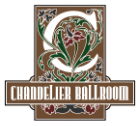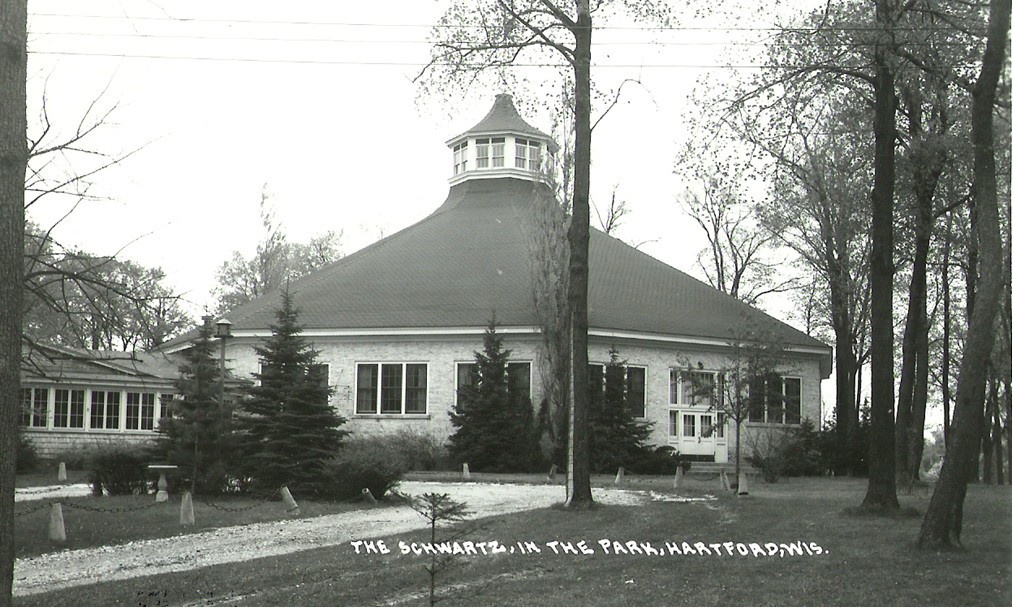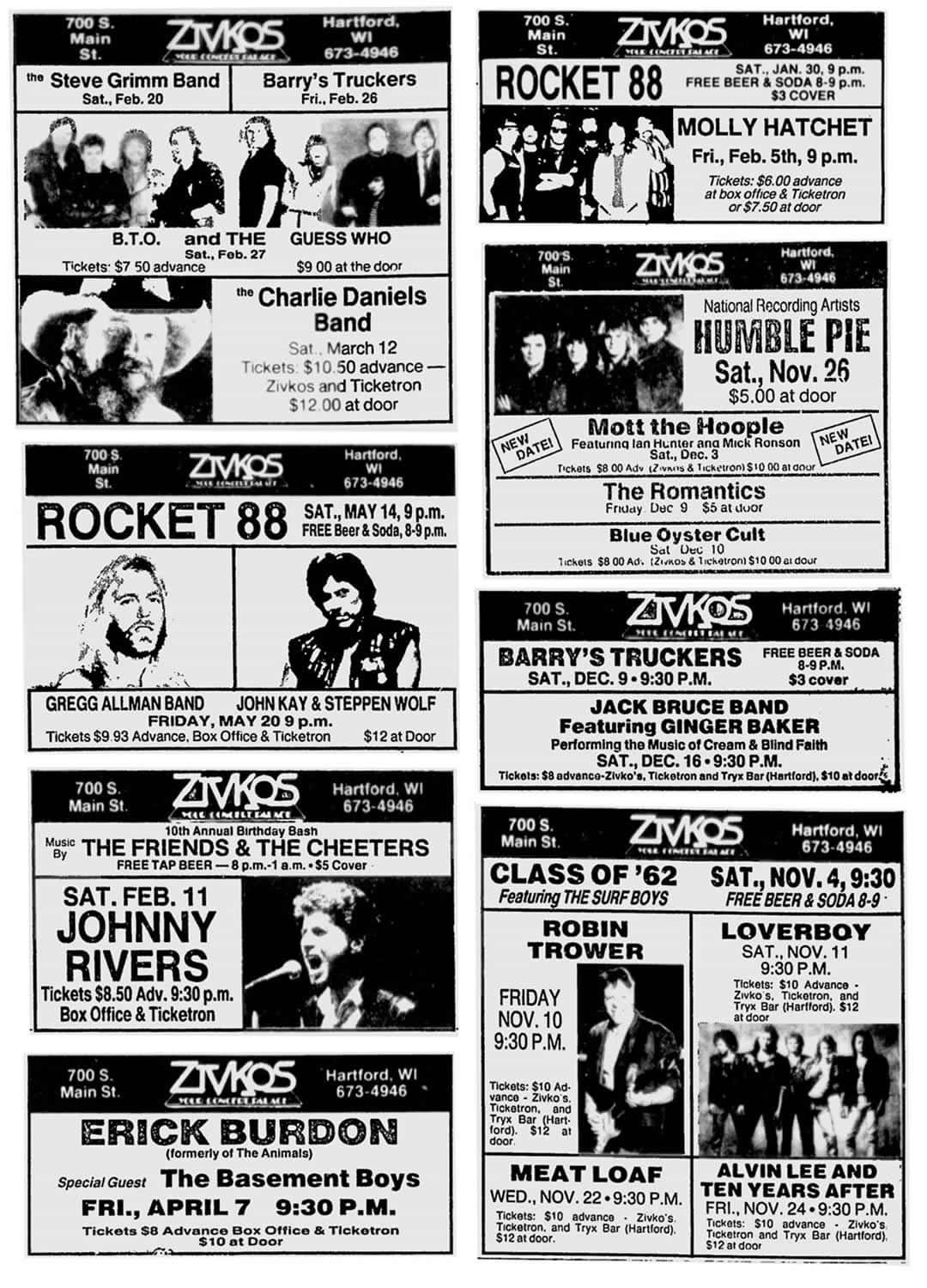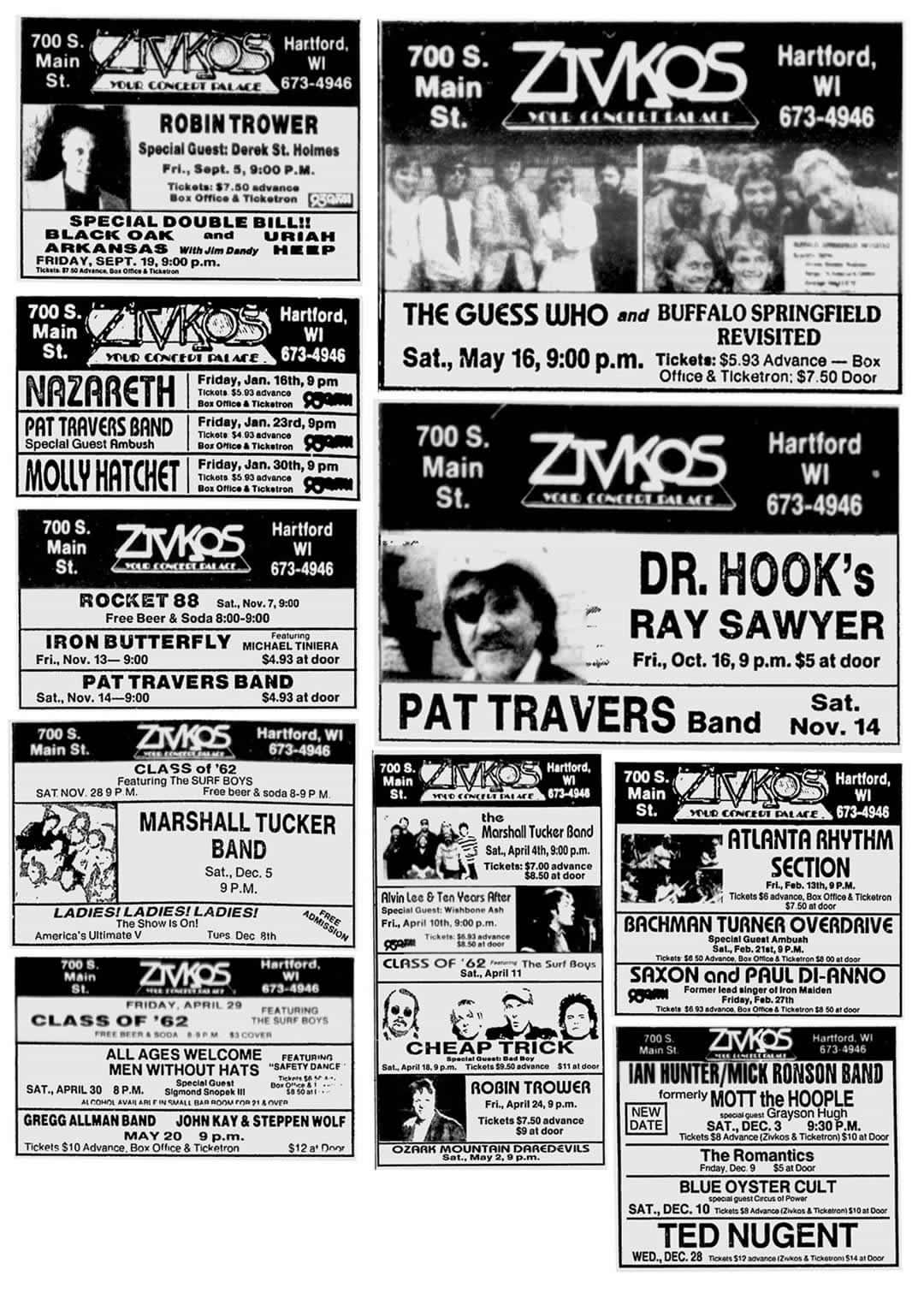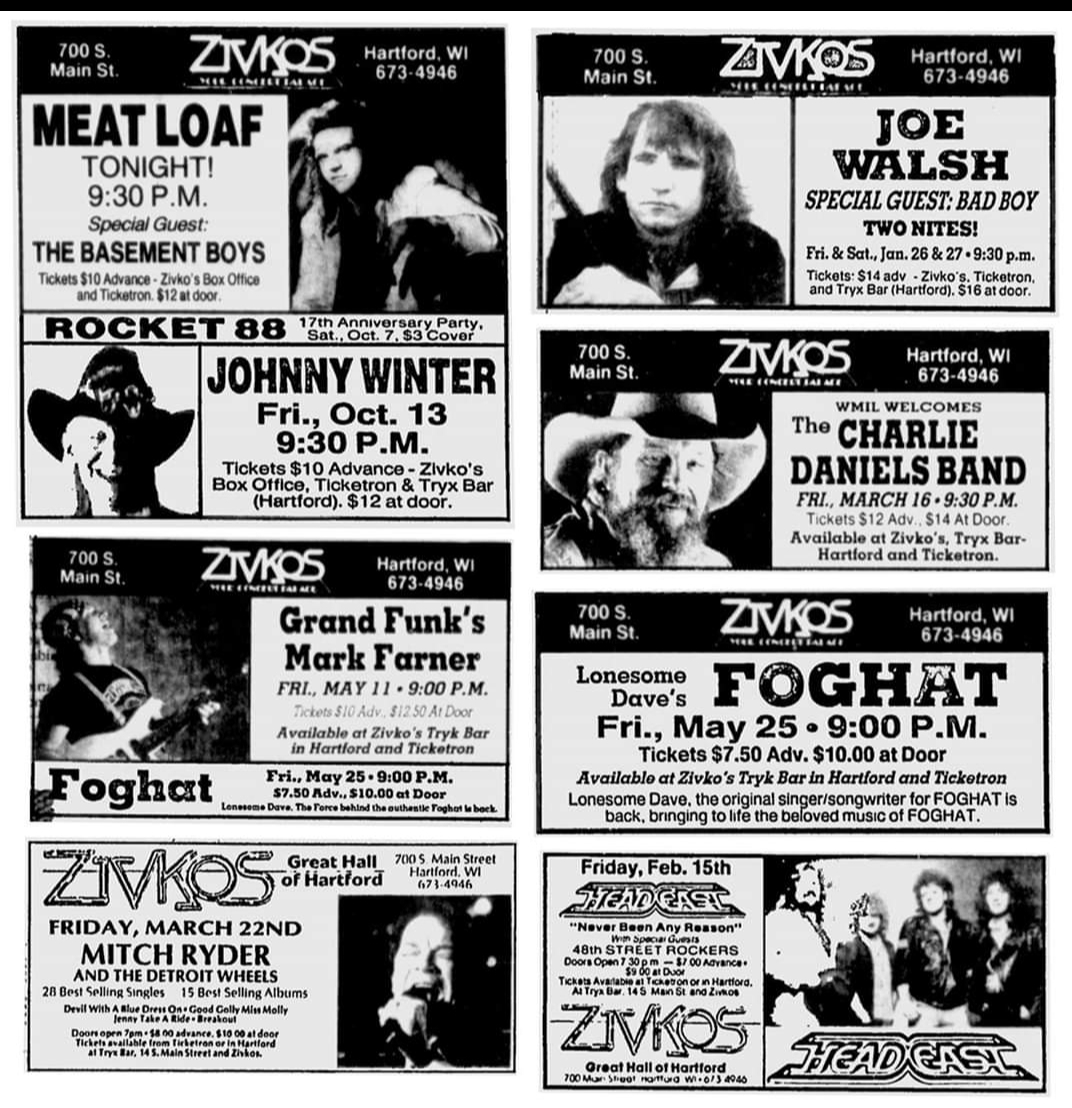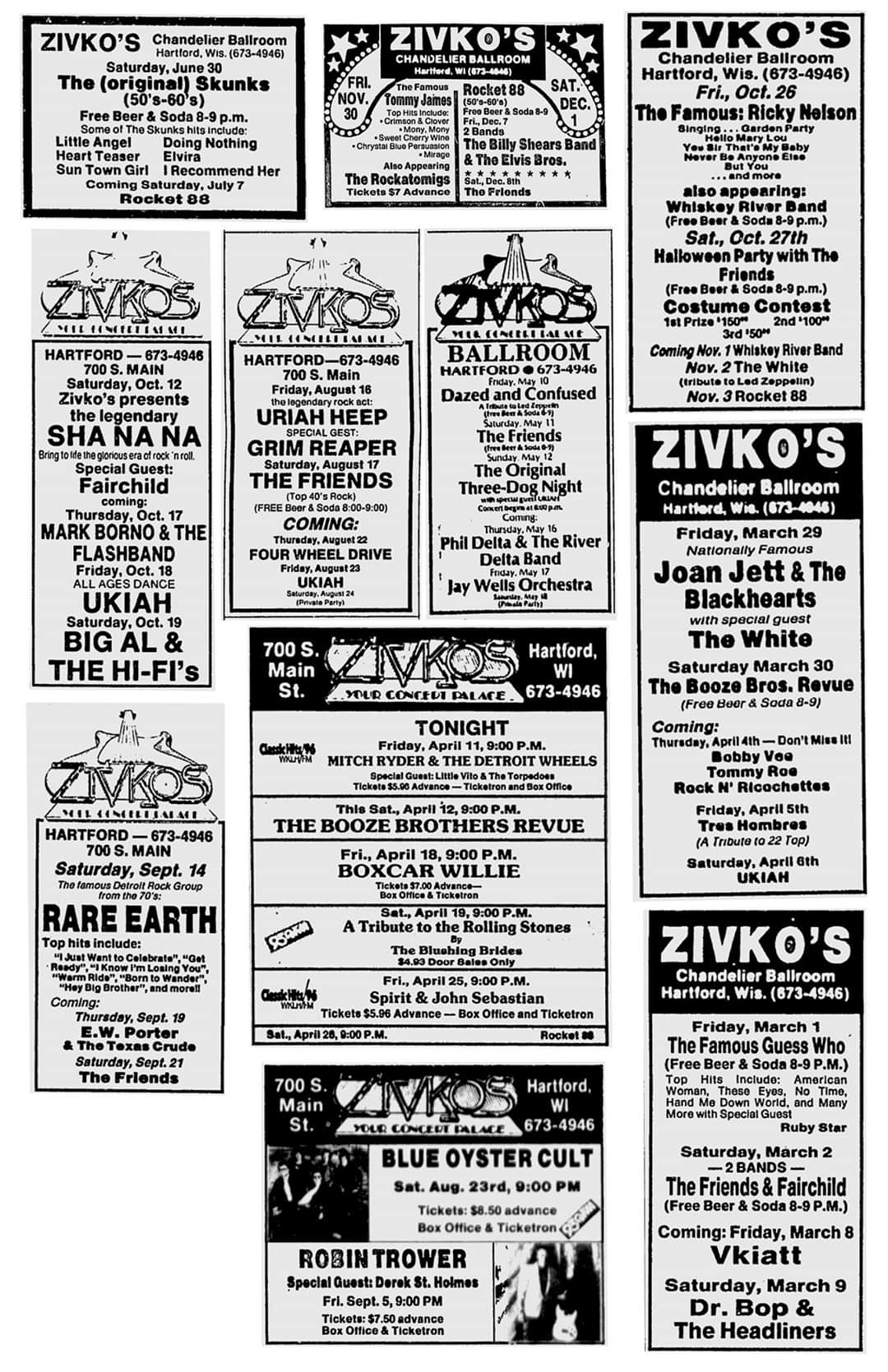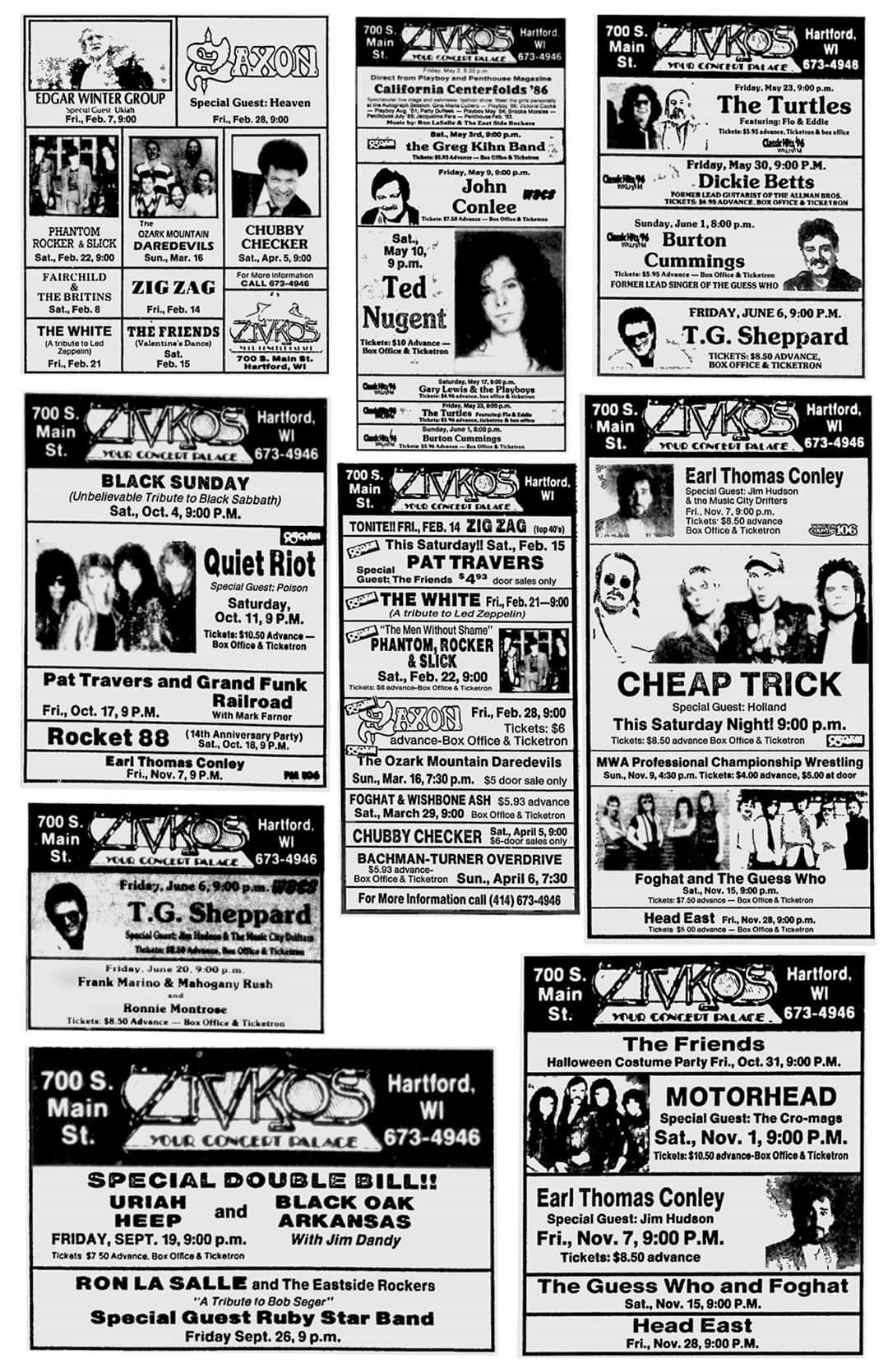HISTORY
Currently located on a little more than eight acres on the east side of this warm, welcoming community, the Chandelier Ballroom is a building which cannot be described with only one word.
Its rich history and the immeasurable number of people who have entered its doors throughout the decades could articulate in many ways, the sights, sounds, and feelings they have experienced here.
The ballroom holds a special place in the hearts of those whom have attended weddings, reunions, anniversaries, birthday celebrations, leisure events and even funerals here.
Others remember sounds from the immense array of musical performances ranging from Tommy Dorsey, Duke Ellington, Benny Goodman, Louis Armstrong, Joe Walsh, Ted Nugent, Cheap Trick, Ricky Nelson, Alabama, Chubby Checker and many, many, many more.
The captivating story of this unique structure is filled with music, war, laughter and love.
The facility which stands at 150 Jefferson Avenue has remained a constant for more than nine decades in the city of Hartford, Wisconsin.
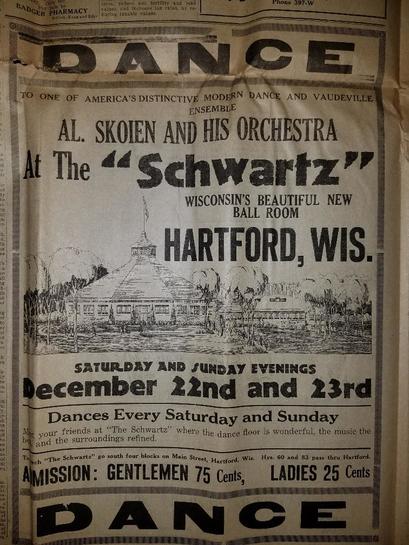
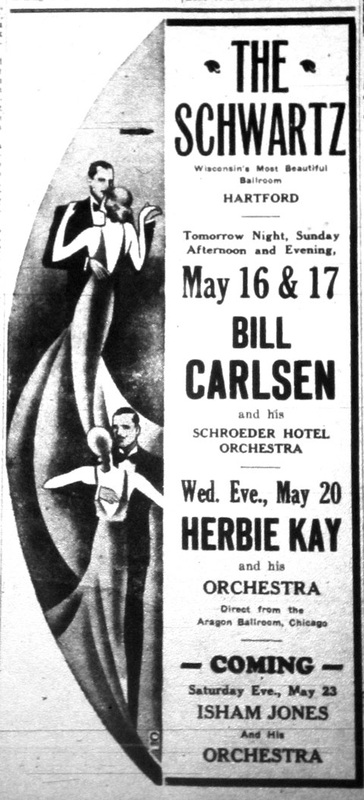
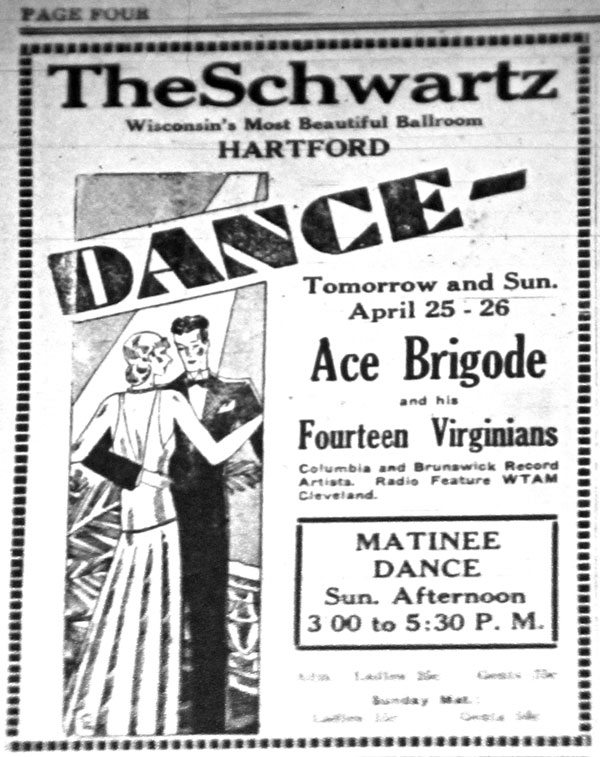
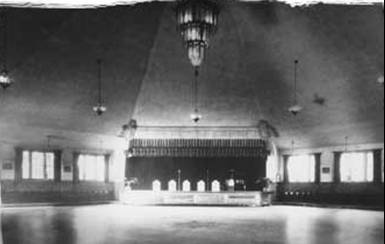
1920
Originally built as an Eagles clubhouse and park, the eleven-acre parcel was acquired by the Schwartz Brewing Co., during prohibition. The owners of the park were members of the Joseph Schwartz family.
The park was formerly owned by Peter Schwartz and A.A. Hauser, the latter having sold his interest to the Schwartz family.
In 1919, the Schwartz Brewery Company bought the Eagles Park and began leasing it and its recreational facilities to the Kissel Mutual Association in 1920.
1928
The Massive Art Deco ballroom was added in 1928 at a cost of $150,000.
In April of that year, The Hartford Times reported that the owners had accepted final alterations of building plans and broke ground on the site of what was to become the largest octagonal structure in Wisconsin, and would give Hartford, the distinction of having the largest dance hall of any kind of any city in the state.
The floor proper rests upon 72 concrete piers which are sufficient to bear up under several hundred tons of weight.
The walls of the new building would be of solid brick and rise to a height of thirteen feet at each corner of the octagon; the walls would be doubly strengthened and would form the rests for the cone-shaped structural steel work that supports the great roof.
The ventilating device was contained in the cupola. To the top of the ventilator the height is 72 feet and to the top of the flag pole it is 96 feet. The building was built to host bazaars, hospital benefit drives, county school commencements, auto shows, and farmer demonstrations.
The ballroom opened on October 20, 1928 with Harold Austin and his New Yorkers. Norbert S. Remmel the son of Joseph P. Remmel and Mary (Schwartz) Remmel was the first manager of the ballroom.
The largest dance hall in the area built to accommodate 3,000 dancers, the Schwartz Ballroom, was advertised as ‘The State’s Most Beautiful Ballroom.’
The Schwartz hosted regular dances every Saturday and Sunday evening featuring the best modern dance orchestras. The Schwartz also advertised ‘excellent lunches and fountain service,’ including their specialty chicken and steak dinners served in a ‘delightful dining room.’
The Schwartz appealed to orchestras from the Atlantic and Pacific coasts, from the Gulf Stream states to the Canadian provinces.
These orchestras are known to millions of radio fans and have played in leading theatres, celebrated ballrooms, aboard some of the largest oceans liners and in leading hotels.
These famous orchestras played at the Schwartz because they were paid their price. One orchestra drew down over $1,200.00 for four hours of playing. Others have run as high as $800.00 for an evening. In 1931, this was high dollar.
The Schwartz admission price for most entertainment in those days was 25 cents for ladies and 75 cents for gentlemen. Sunday matinee dances lasted from 2:30pm-5:00pm and admission was 15 cents for ladies and 50 cents for gentlemen.
1930
The Hartford Rotary Club, organized on March 11, 1924 began having their meetings in the Schwartz Ballroom Dining Room on April 24, 1930. Then on February 23, 1939 it was moved to Remmel’s Club 321 and later moved back to its’ original location of the Central Hotel. The Rotarians would return some years later, and little did the club know then, how extremely involved they would be in saving this structure from complete demolition.
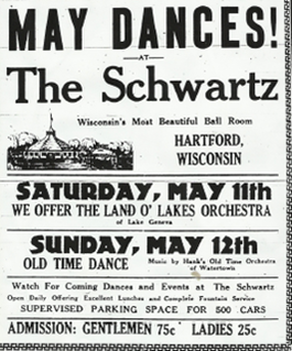
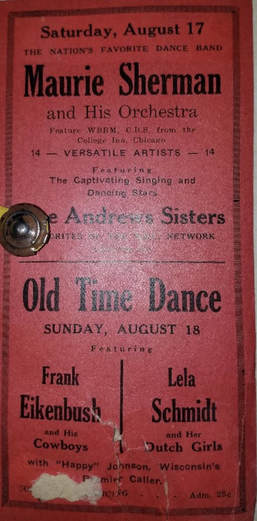
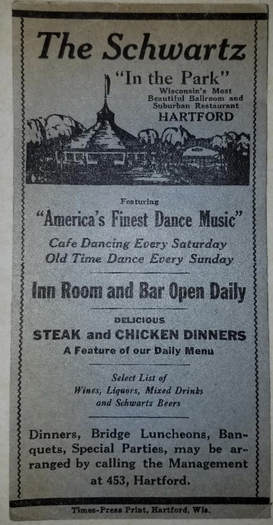
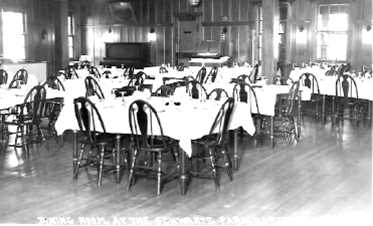
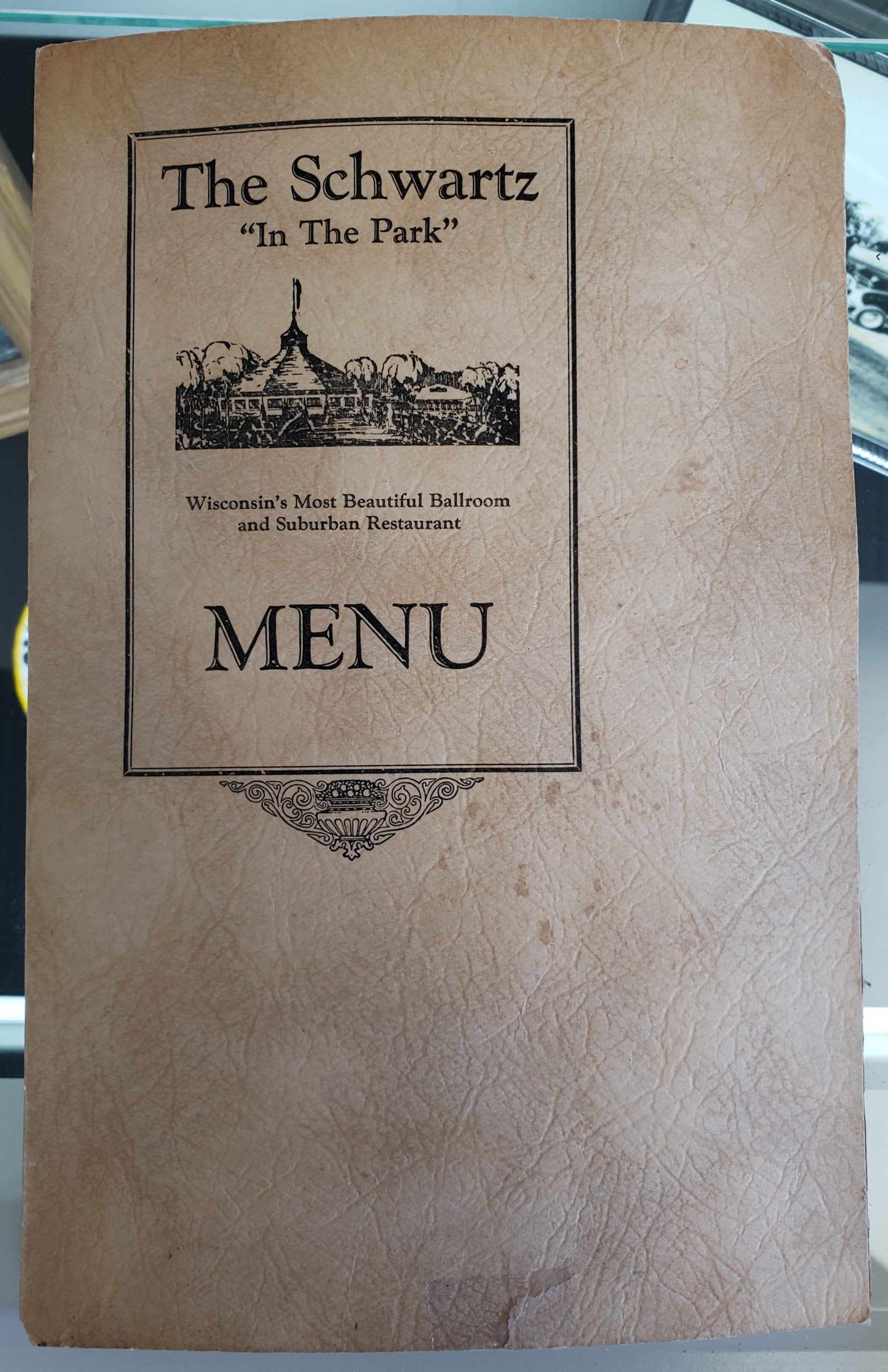
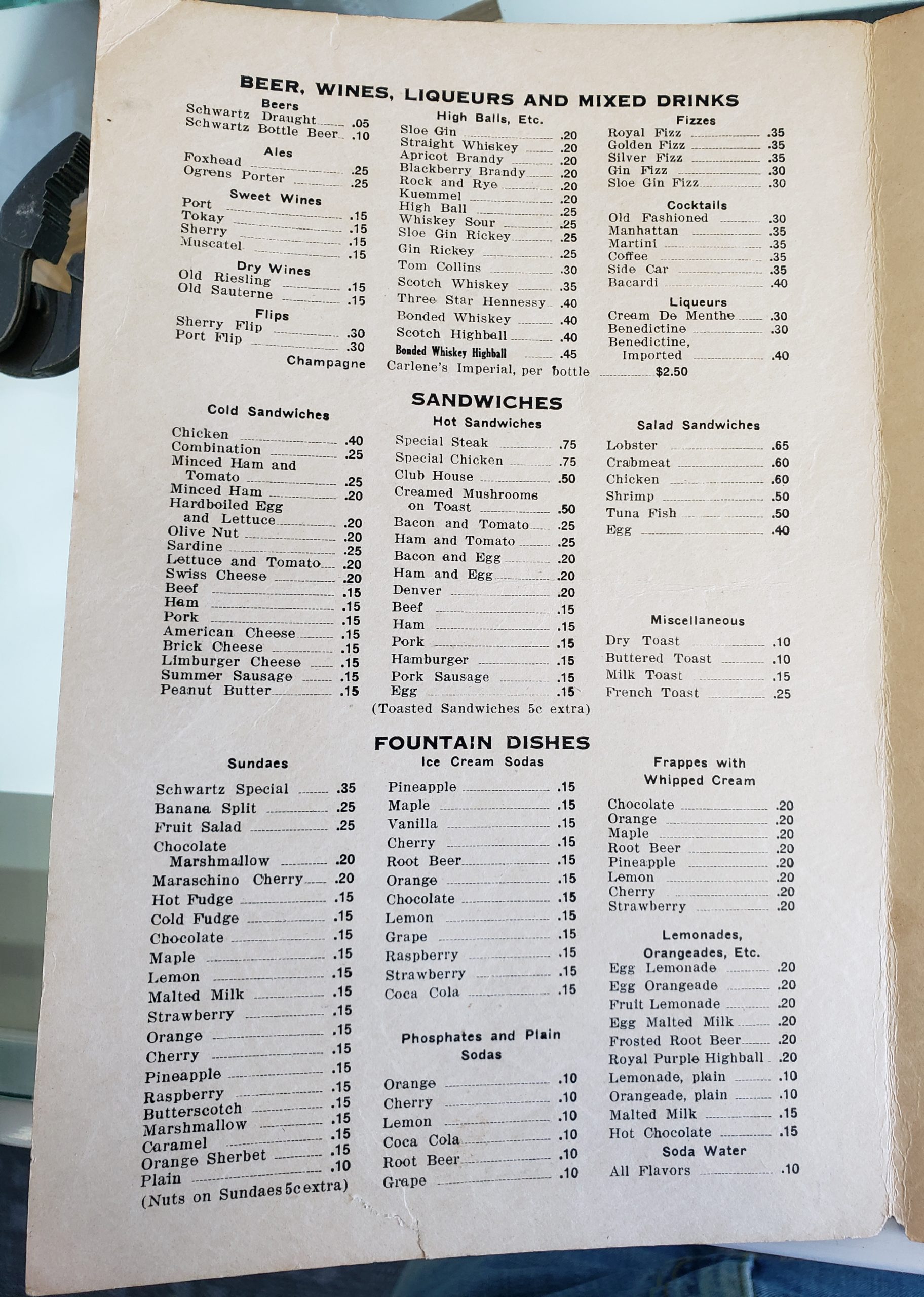
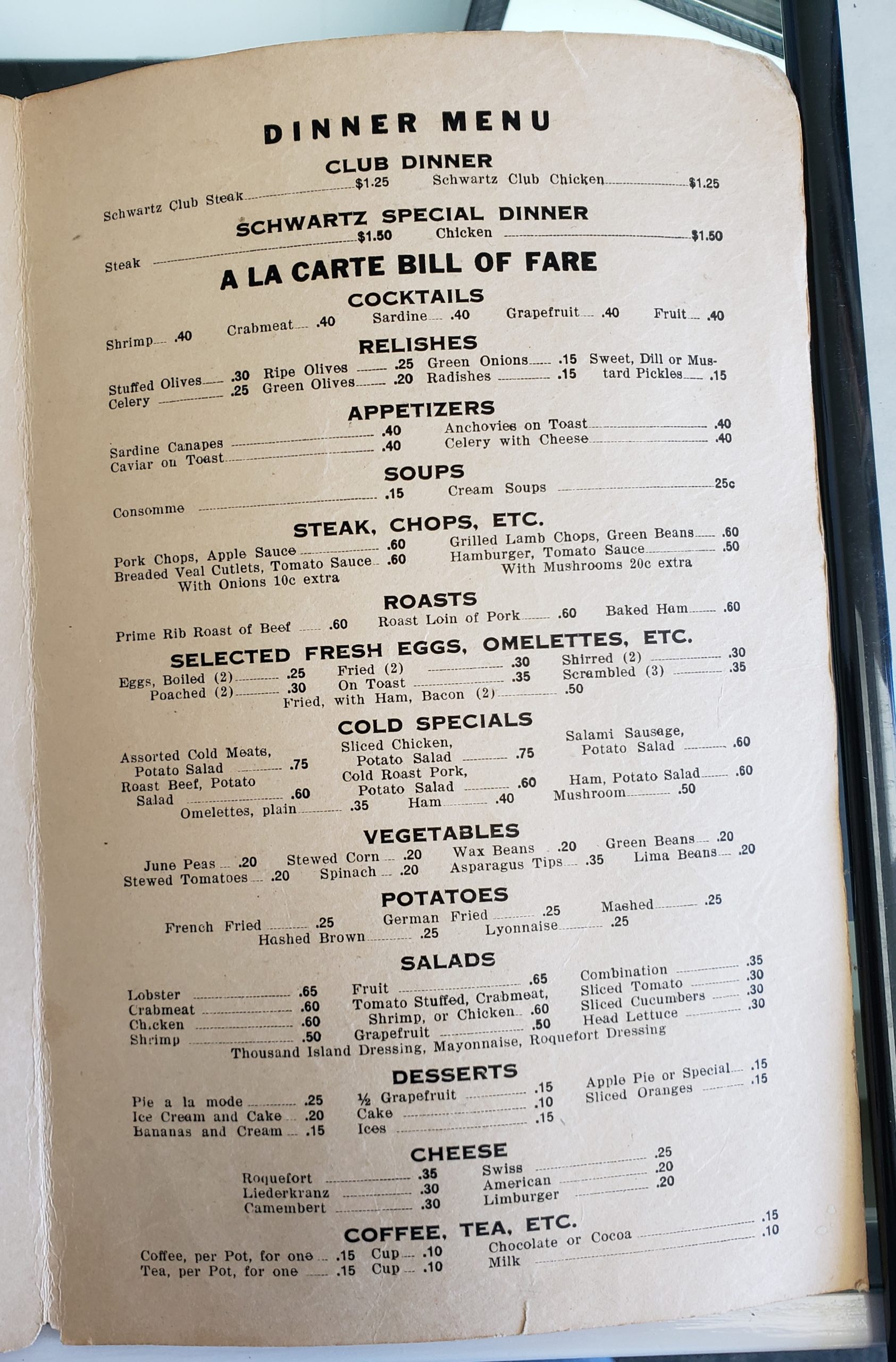
1931
Austin Wylie and his Orchestra from Cleveland, Ohio performed at The Schwartz in 1931.
This event was a benchmark in The Schwartz’ history as Austin Wylie and his Orchestra presented the First Program of Dance Music direct from The Schwartz through WTMJ, the Milwaukee Journal Station, at 10:30pm, Saturday, May 2, 1931.
Two half hour programs were presented every Wednesday, Saturday, and Sunday night.
It was advertised as, “When you find it impossible to be at The Schwartz, tune in, so as not to miss the wonderful dance music. Tell your friends about these broadcasts. Your comments will be appreciated.”
Equipment for the remote control hook-up with WTMJ radio was brought to Hartford and an expert from the Milwaukee Journal was on hand to manipulate the broadcasting from this end. This broadcast helped The Schwartz to become nationally famous.
Wayne King, king of the waltz, and his Orchestra made a personal appearance at The Schwartz in July of 1931.
“My neighbor asked to take me to the dance with Wayne King playing. Oh was I excited. I purchased my first ‘Store Dress’ as we called them then. Its cost $1.98. My neighbor date was all suited up tie and all. When we got out of the car in the park already we could hear that lovely music.
As I remember we would enter and there were long wine-colored velvet partitions we’d separate a bit and in the glorious ballroom we were. The next attraction was the chandelier. Oh how we danced and what a beautiful setting and the music. Then it was intermission. We went to the dining room. Then we each had a glass of beer (5 cents.)
We must always remember money was scarce; so that was the treat for the night. We did not order food; we had plenty of that at home. I’ll always remember “The Waltz you saved for me.” It was a lovely evening.” Courtesy of Marie A. Werner
Aside from the large orchestras, other entertainment was also offered at The Schwartz. Café Dancing was offered, featuring The Aristocrats playing in the dining room during dinner from 6 to 8pm and from 9pm until closing (no cover charge for this entertainment.)
Dance contests were also held; Grand Prize Dance with music by Clem Shermeister’s Play Boys’ offered a prize of $55.00 in gold.
1932
In 1932, the Hartford Ballroom went on nation-wide radio hook-up two nights each week.
January 13, 1932 opened the initial broadcast that carried the name of The Schwartz Ballroom and Hartford throughout the land. Broadcasts were made possible by the Columbia Broadcasting System.
The opening broadcast was begun with an address from the mayor of Hartford, Adam F. Poltl. The first music that was broadcasted was that of Art Krueger and his Columbians.
Some of the principal stations that broadcasted at that time included WISN at Milwaukee, WCCO Minneapolis-St. Paul, WABC New York, and KMOX St. Louis, and KSCJ in California.
1935
In February of 1935 The Schwartz was the home of a Spring Fashion Show and Beauty Contest for Miss Hartford for 1935 and for the District Beauty Championship. Miss Wisconsin of 1934 was the Mistress of Ceremonies. Of course, dancing was a part of the event featuring “The King of Comedy” Arch Adrian and His Nine Men of Note. Barn Dance Jamborees were also found in the history of The Schwartz featuring Lulu Belle and Skyland Scotty. Patrons were invited to bring a picnic lunch to enjoy in Schwartz Park.
The Schwartz also began advertising Bingo every Thursday with 35 cent games. Nationwide artists performed at The Schwartz including Husk O’Hare and his “Genial Gentlemen of the Air.”
During that time period, this was one of the most popular bands on the air. Many artists had such a wonderful time at The Schwartz that they would return year after year.
The list of performers goes on and on like a who’s who of orchestras including Anson Weeks and his orchestra from California, Hal Kemp whose internationally famous orchestra was a regular feature on both the NBC and CBS networks, Hal performed with Heinie and his Grenadiers and Carl Bergmann and his Cowboys collaborated in furnishing an evening of old time music.
1936
Although The Schwartz had continuous entertainment throughout the years of the depression, the ballroom was hit hard during this era. In 1936 it was sold to Hartford Enterprises.
1938
1938 brought new management to The Schwartz; J.H. “Jack” Yeo opened the post-Lenten season with Bill Carlsen and his orchestra and Eddie Duchin. Mr. Yeo described The Schwartz as “The Park” and also introduced a new “Theatre Restaurant” feature which included some form of entertainment every night of the week except Mondays.
Little Jack Little performed along with Fletcher Henderson, Orrin Tucker, Tommy Dorsey and his famous Orchestra, Edythe Wright, Allen Storr, Jack Loenard, and The Three Esquires.
In 1938 Guy Lombardo and his Royal Canadians performed on the stage for a standing room crowd of 6,000. Another 1,000 circled the building and danced on the lawn.
1939
Saturday, October 7, 1939 brought the likes of Lawrence Welk and His Orchestra whose “Champagne Music” was a favorite with dancers everywhere.
Admission to the show was only 50 cents plus tax until 9:30pm, after the price went up to 68 cents, plus tax.
1940 once again, brought new management to The Schwartz Ballroom, Norbert Remmel and Senator Jesse Peters; Remmel had managed The Schwartz previously.
Performances in the 1940’s included Griff Williams, “Skipper Leone’s Deckhands,” Mel Pester His Saxophone and His Orchestra, Ted Weems and his Orchestra with Perry Como young baritone, and Elmo Tanner, star whistler.
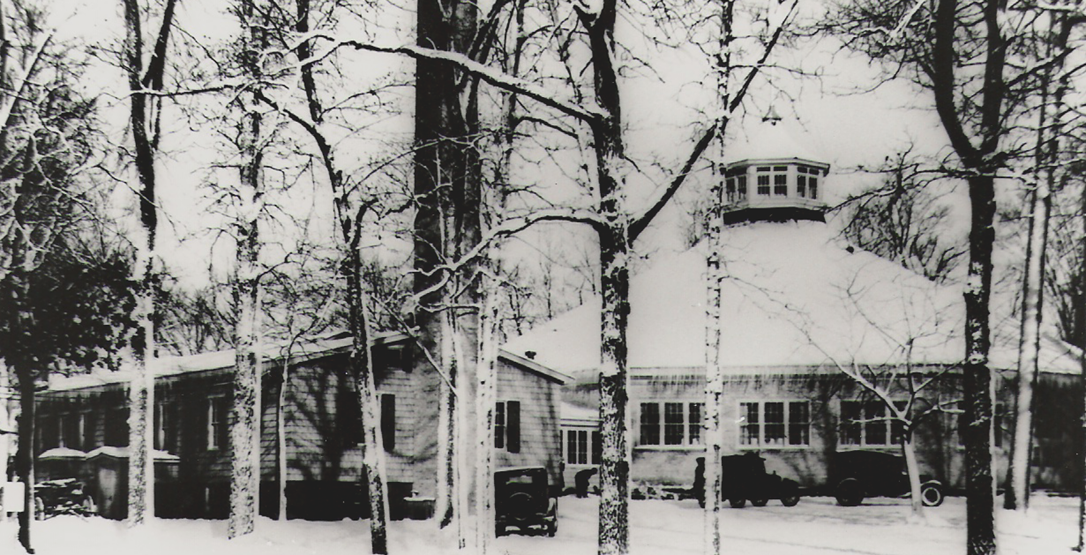
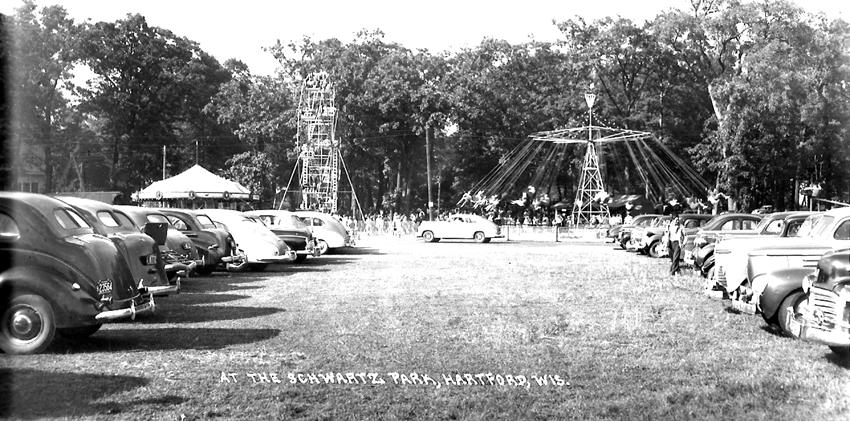
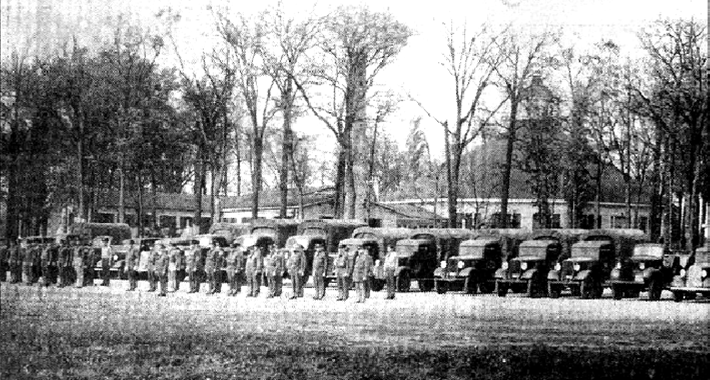
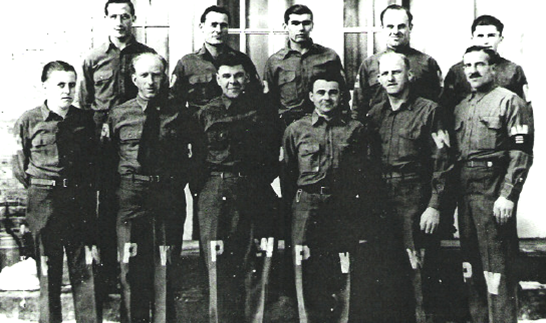
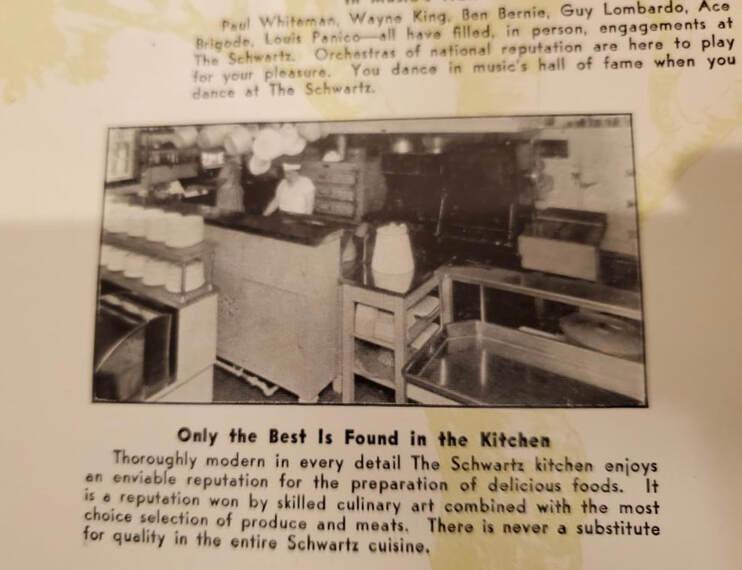
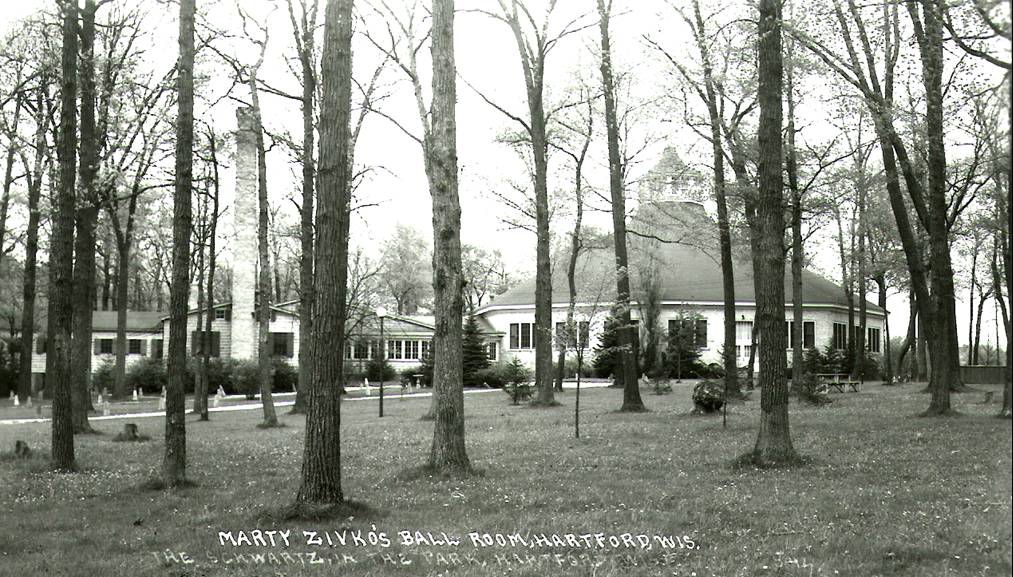
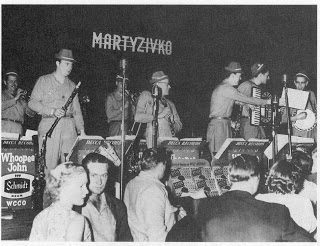
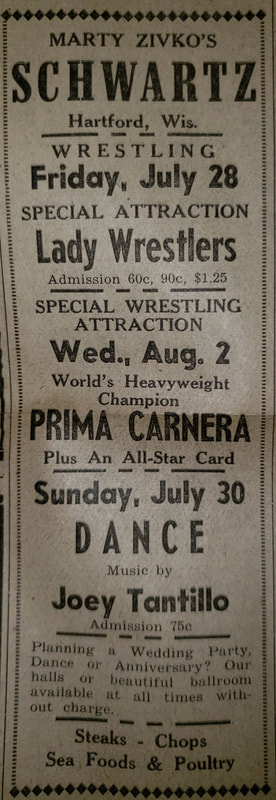
1941
1941 brought roller skating to The Schwartz.
The management of The Schwartz and Andrew Brault, local tavern keeper, were the promoters of this new amusement to be held every Thursday evening.
Music was provided by Rube Scholz on an electric organ. Skating was from 8:00pm-11:00pm. Admission was 20 cents and 10 cents for spectators.
A special event was held in 1941 for the annual dance of the Waukesha Local Musician’s Union. Sixteen dance bands and five strolling unites performed that evening to a packed house.
Hartford’s 4th of July Celebration in 1942 highlighted the ‘Baby Ruth Candy Bar Hunt’ at Schwartz Park.
Families were invited to enjoy dinner or supper in the park while being surrounded with entertainment, including performances by the Hartford City Band, prizes, rides and more.
1944
On October 1, of 1944 the end of the big band era had arrived.
Dancing and dining and the sounds of music from The Schwartz came to an abrupt halt.
During WWII the ballroom was closed but not empty. Leased to the federal government, it served as a detention center for 350 German Nazi Prisoners.
The Schwartz became Camp Hartford. Capt. Jos. T. Atkins, of Texas, veteran of 22 years in Uncle Sam’s army, would be the commanding officer of the Hartford camp, assisted by Lts. Aloysius Tierney of New Jersey and Millard France of Hawaii. The Schwartz held prisoners year round, expecting to exist for only a few months, the camp housed prisoners continuously until closing in January of 1946.
The prisoners worked at local hemp mills, dairies, canning companies and also worked on area farms that contracted crops to those canneries. Prisoners also tanned hides at W.B. Place & Company, Inc.
It was because of these local companies, which needed year round employment that Camp Hartford did not close. The sixty-three acre camp took over the entire premises of The Schwartz Ballroom and Park with fencing and guards surrounding the compound.
One hundred fifty double bunks, erected around the perimeter of the Ballroom slept 300 men. When the numbers reached upwards of 600, the Army recruited volunteers to sleep in tents just outside the side entrance.
All of the PW’s used the latrines, showers and laundry facilities installed in the basement of the Ballroom. Camp Hartford was often described as a good camp; the prisoners ate in the dining room, and many guards regularly chose to eat with the prisoners because of the tasty German-style meals served.
PW’s often attended local church services, received newspapers and listened to polka stations most of the time. The camp also regularly offered to show prisoners two American movies each week.
A weekly news program (Wochenschau) and a main movie in English were delivered regularly every Thursday. As participants of the English course, the German prisoners would take turns translating to others throughout the presentation of the films.
A seven piece band and male chorus were active in the community, each giving periodic concerts often performing in the community band shell.
Allowed one scheduled visitation day per month, many prisoners looked forward to visits from relatives living in Wisconsin who traveled to the camp for the engagement.
1946
The PW’s remained and worked in the Hartford area until January 1946.
During the first 11 months of labor, approximately 250 prisoners working at area companies including W.B. Place Co., Clyman Canning Co., Libby, McNeill & Libby, Belmont Cheese, Dairyland Co-op, and Stokely Foods had brought in nearly $305,000 worth of earnings in 57,864 hours.
The prisoners were given checks at the end of their stay at The Schwartz. They were paid $0.80 per day worked.
Rumors had begun to linger that the PW’s had caused damage to the ballroom, the opposite however, turned out to be true.
The entire ballroom property had been thoroughly cleaned and repainted and put in as good or better condition than before the PW’s took over.
The war had taken a toll on the thriving ballroom. Limited acts would still perform, however, the attendance numbers had declined.
On Sunday, February 10, 1946 the Ballroom reopened for business with George Gordon and his Rhythm Masters. Ray Miller and His Music also performed in 1946 along with Uncle Louie, the Town Hall Band, Berne Roberts, Tony Groeschel and His Popular Band, Red’s Rhythmaires, Joey Tantillo, Tony’s Revelers, Ted Wayne, Les Marose, and Larry Everts and His Self-Styled Music, where admission was $1.00, much higher than the usual $0.60.
1947
In 1947 the Weiss Harmonizers, Leroy’s Musical Knights, performed among many others. There was dancing every Sunday and a Fish Fry every Friday, boneless pike, fresh jumbo shrimp and lobster tails were on the menu.
1948
In 1948 Marty Zivko and His Polka Boys performed. Admission was $0.75. The home and automobile show was at The Schwartz Ballroom in March of 1948, forty-six Hartford businesses and industries were represented and several new cars were displayed.
Some of the businesses that were included in the show included J.C. Penny Co., Krueger Studio, McComb & Gehl Sales Co. Inc., Ziegelbauer Refrigeration and Appliance Co., Sears, Roebuck & Co., Schauer Bros, Inc., W. Doll Garage, Baus Food Mart, Poole Drug Store, Reimer Dairy, Carroll Cities Service Station, and International Stamping Co. Lawrence Welk played at The Schwartz that year as well. Admission was $1.75.
Also, “The Swiss Family Fraunfelder” Hollywood’s Famous Yodel Artists.
1949
1949 brought the likes of Sammy Madden, ‘Fritz the Plumber’ as well as Gordon Miller and Frankie Yankovic. There was also an ad in the paper for a Wedding Dance in honor of Miss Doris Bayer and Mr. Dennis Hefter with music by Tony Groeschl’s Orchestra “Everybody was welcome.”
In December of 1949, a few weeks after “Marty Zivko and the Polka Boys” had played at The Schwartz, Zivko returned to the ballroom from Milwaukee to attempt to rebook the band, only to find a bankruptcy auction being held and the building being up for sale.
The Bohr Sales Company of Oshkosh was handling the sale, and members of the board (Hartford Enterprises) that had been running The Schwartz for several years had high hopes of liquidating and paying off all stockholders and debtors.
The two hundred or so speculators, including George Divine, operator of the Eagles Ballroom in Milwaukee, guessed at what amount the building would bring, ranging from $40,000 to $100,000.
Zivko bid on the building and purchased the ballroom right then and there. He had a true love of music, and if it wasn’t for Marty Zivko, the ballroom would not be standing at 150 Jefferson Avenue today.
He won the lot for the sum of $59,600 ($57,000 for the ballroom proper and thirty acres, plus $2,600 for an additional eight acres along Hwy. 83) and sold his accordion business to help with financing.
Zivko’s plans for the ballroom included complete dining room service at all times and the Ballroom would now be available for rental for all occasions, including private parties, weddings and any other function.
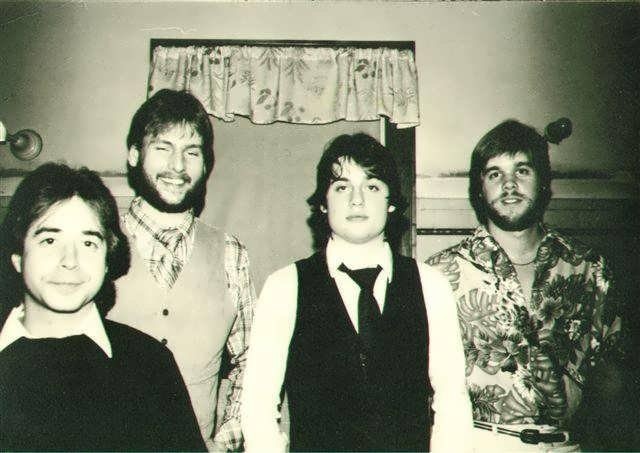
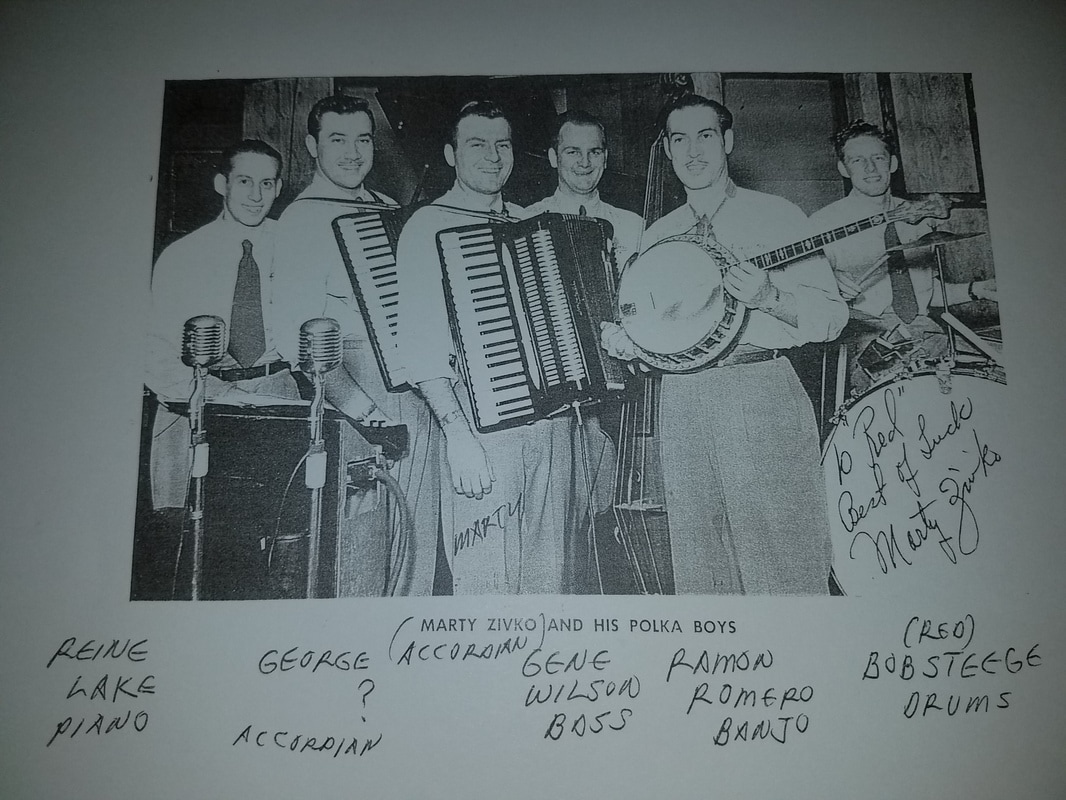
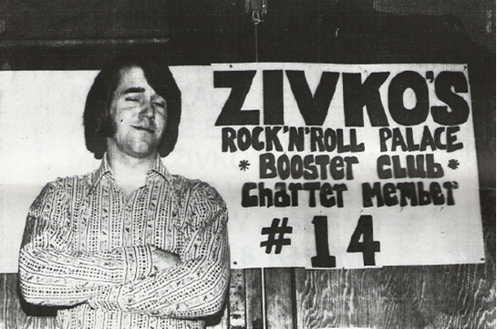
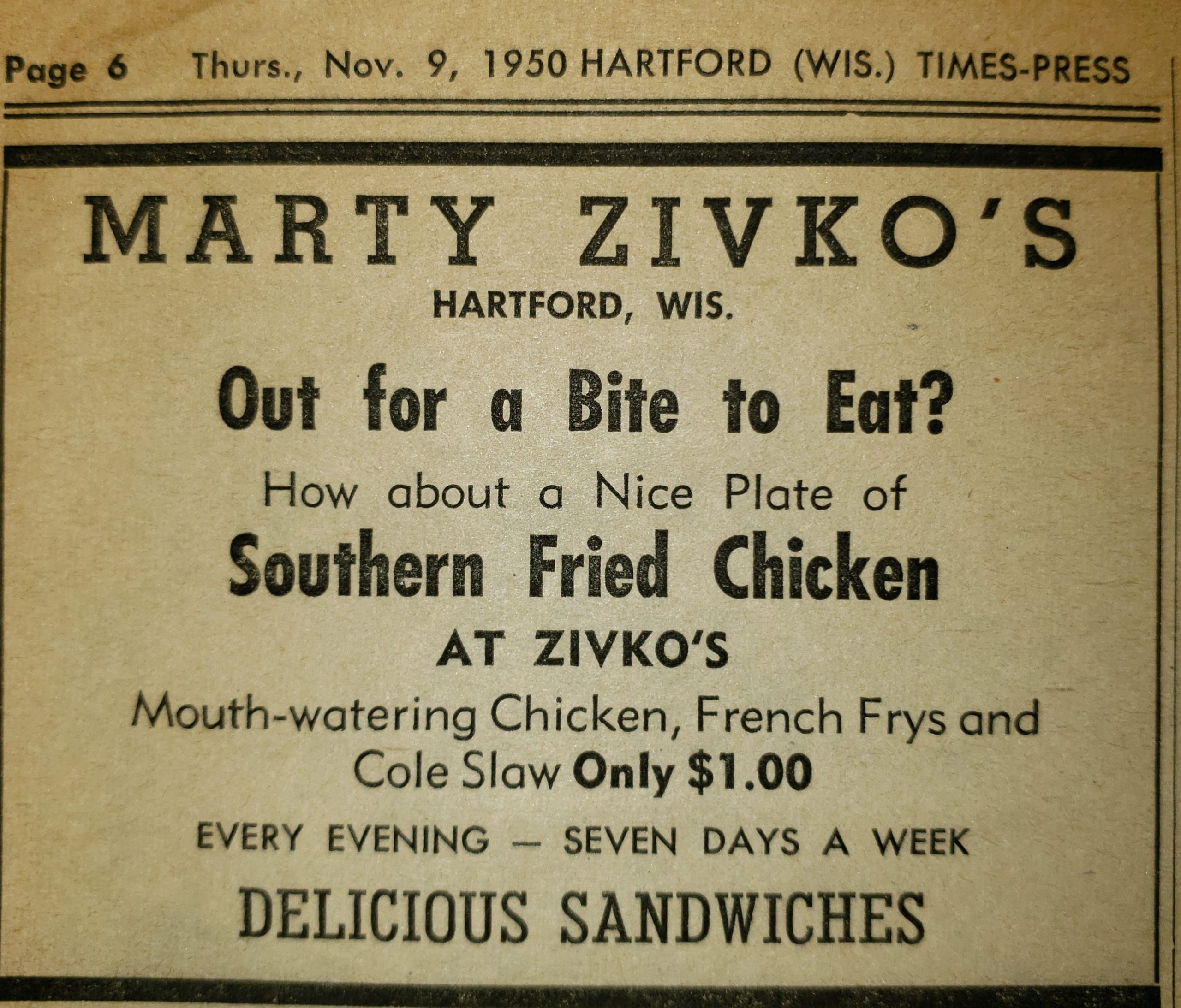

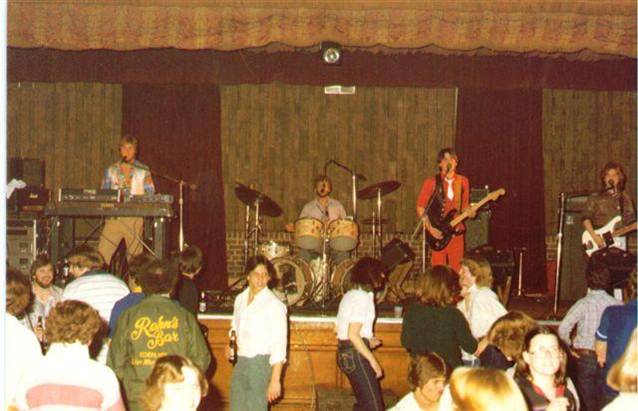
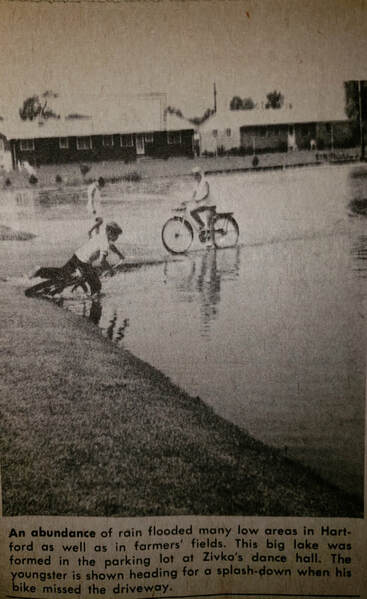
1950
The Ballroom reopened on Saturday, January 21, 1950 as Marty Zivko’s Schwartz Ballroom. Marty Zivko and his Champion Polka Boys performed with free admission.
By the end of the month, Zivko had a variety of entertainment organized and advertised Old Timers Party Nights, charity dances, comedians, free beer brewed and bottled by the West Bend Brewing Company, and a restaurant serving steaks, chicken, chops, and lobster. The chef was William Brennan.
In 1950 Primo Carnera, former World’s Heavyweight Boxing Champion fought in a boxing ring at Marty Zivko’s against Ed “Bull” Allen. Admission was $0.75, $0.90 for reserved seats, and $1.25 for ringside seats.
There was also lady wrestling including Miss Gloria the ‘Lady Giant from Buffalo, N.Y.’ who was 6ft tall and 202 lbs. as well as Cecelia Benesh a ‘Newcomer from Czechoslovakia.’ Tag matches were also featured along with ‘Local Boys’ from Neosho and Hartford. Other wrestlers included Pierre LaSalle from Montreal, Wild Bill Brooks from Connecticut, Juan Hernandez from Mexico, and Bobby Bruns from Chicago.
Each time an affair was held at Zivko’s with the exception of roller skating, Marty would play a “Mystery Melody” over the loud speaker. Names would be selected from those present and if the selected person was successful in guessing the mystery melody he or she would receive a prize. Prizes included refrigerators, washers, radios, deep freezers and a 1950 Chevrolet was the grand prize.
Some couples who advertised their weddings in the paper charged an admission of $0.75 for ‘All the free beer you can drink’ to help pay for the band and the beer!
Marty Zivko knew where his profits derived from; therefore, shortly after purchasing the ballroom, Zivko installed a new 141 foot bar to give faster service to its patrons. Zivko’s had a total of 210 feet of bar space. He had a ‘two for one’ night to celebrate.
1953
Love was in the air at Marty Zivko’s Schwartz Ballroom. We have heard countless stories of lovers recollecting their memories of meeting here, dancing here, or being married here.
Wedding receptions have been a major source of income for the Ballroom throughout the years.
On December 19, 1953 Maynard and Marilyn Roeseler of Hustisford were married and a 9:00pm reception was held at Zivko’s Ballroom. “We were married at Bethany Ev. Lutheran Church, had a small dinner at the Lake Street Hotel, and then had our wedding dance and reception at The Schwartz. Jimmy Hartwig’s band played, we did the ‘bunny hop’ and had lots of fun.
The Ballroom is a very nice place to have a reception.” Courtesy of Maynard & Marilyn Roeseler
1954
In spring of 1954 Marty Zivko unveiled a remodeled barroom. An original menu was recently discovered with other memorabilia.
‘Marty Zivko’s Schwartz’ was shown on the cover. Inside, menu items included: beer (shorties as they were called) sold for 20 cents, Christian brothers brandy sold for 35 cents and scotch sold for 50 cents.
Plate specials included roast beef with choice of side for $1.25, a hamburger for 25 cents, French fries for 25 cents and an ice cream sundae sold for 15 cents.
1955
In 1955, Zivko gave up time spent with his own band, and began managing the ballroom.
He began with polka and country bands, but by 1962, it was clear that rock ‘n’ roll was coming on strong.
That’s when Marty Zivko’s Rock ‘n’ Roll Palace was born. Big acts were booked, like the Four Seasons and the Everly Brothers.
Zivko was also responsible for bringing in the likes of Chubby Checker, Ricky Nelson, Gary Puckett and the Union Gap, (a show which drew almost 4,000 fans in the late ‘60s) the Association, Steppenwolf, Kansas and Ted Nugent.
Zivko’s also became known as a haven for young Milwaukee drinkers. The drinking age was 21 in Milwaukee County but only 18 in Washington County. This brought thirsty young people who enjoyed live music from all over southeastern Wisconsin and beyond.
Susan Machak, Marty’s daughter remembers playing in the dirt ‘tunnels’ that run underneath the lobby and ballroom area as a child.
She recalls old posters of many young actors at that time. She specifically remembers a very young looking Lucille Ball. Susan also possesses some army patches that were on uniforms from then that she found in the attic above the kitchen area.
Susan and her mother remember some of the bands that had performed during their family’s involvement with the ballroom.
They can recall the likes of Six Fat Dutchmen, Cousin Fuzzy, Dick Rogers, Rainbow Valley Dutchmen, Frankie Yankovic, Norbie Baker and of course, Marty and the Polka Boys. Also Sammy Kaye and his Orchestra, Four Seasons, Dion, Bobby Vee, Bobby Vinton, Dee Rob, Peggy March, the Everly Brothers, Brian Hyland, Lou Christie, Lonnie Mack, Chubby Checker, Bobby Bare, Jay and the Americans, the Legends, Johnny and the Hurricanes, Tommy Roe, Johnny Tillotson, Paul and Paula, the Fireballs, El Rey and the Nightbeats, Rocket 88 and Conway Twitty.
Stacie Zivko Bierly, granddaughter of Marty shares her memories of the facility. …. “I have a lot of great childhood memories of the Ballroom. At the time I was there my Grandpa Marty lived in the house next to the Ballroom (which he built) and my sweet Great Grandma Julia Morgan (Marty’s Mother) lived in the house next to the main house.
We lived just down a few blocks on Martin Drive so I would ride my bike over all the time. During the days my sister and I had a blast putting on plays on the stage and making my folks, Grandpa Marty, Sharon, great Grandma and Alice come and watch. (Alice was a sweet lady who cleaned the Ballroom for years) On New Year’s Eve we had a blast filling up Balloons for the big release at midnight.
They would hang all the balloons in the main ballroom and we would climb up into the tower and release them. My Dad (Bill Zivko) actually lived in the Ballroom for many years before they built the houses. My folks actually met at the Ballroom so they have a lot of funny memories I wish my Grandpa was still alive he had so many wonderful stories about his life and the Ballroom.
1958
A 1958 newspaper article showed Zivko shoveling the snow. It went on to mention that he and his wife and three children handled all of the cleaning, cooking and minor repair jobs.
Zivko sold the ballroom in 1981 to Gary and Marion Wendorff, who continued to bring in music attractions and use it as a reception facility. They met during a concert at Zivko’s five years before purchasing the facility.
Troy Fassbender shared some very fun memories with us during his time spent here… “Many a time Gary and Marion Wendorff, Jim Stommel(Bar Manager), Jim’s wife Sandy Stommel(sat in ticket booth and sold tickets)Keith Kindt, and myself, drank after the shows in the small bar and they made us hamburgers/fries in the kitchen and sat there till the sun started coming up. Obviously my pre-police days!
We either escorted the Band members from the office, through the small bar and then down the right side of the Ballroom. Or they parked their tour bus at the front,side entrance and escorted them in to the stage area. I Remember it like it was yesterday. Good memories!”
1982
1982 an article showcased the Wendorff brother’s entertainment list including Sierra, Rocket 88, The Britins, Big Al, Booze Brothers Revue, The Rage, The Shivers, Bad Boy, and White Lie.
The Ballroom was managed by Clarence “Butch” Wendorff. During the week, the Wendorff’s offered local entertainment with no admission charge including Whiskey River, Spid Peeper, and Southern Express.
Chuck Pierog sent an email to the Ballroom and shared a lot of information on the shows he attended here throughout the eighties and early nineties.
“I was at a few of the shows and saved my ticket stubs. Truc played many dates in 1973 and 1974, Steppenwolf & The Guess Who on November 8, 1985, Foghat and Wishbone Ash on March 29, 1986, the ticket price was $5.93 “Tax Included.” Robin Trower on September 5, 1986, Uriah Heep and Black Oak Arkansas on September 19, 1986 for $7.50.
Nazareth on January 16, 1987, Wishbone Ash on April 10, 1987, Alvin Lee on April 10, 1987 for $6.93, Ian Hunter and Mick Ronson on December 3, 1988 for $8.00. Eric Burdon on April 7, 1989 for $8.00, Robin Trower again on November 10, 1989 for $10.00, Jack Bruce & Ginger Baker on December 16, 1989, Joe Walsh on January 27, 1990 for $14.00, Blue Oyster Cult on December 10, 1988 and December 14, 1991, and Kansas November 8 and 9, 1991 and 1992.
Other bands that I have seen at Zivko’s but don’t have the dates for are Pat Travers, Ted Nugent, Jack Bruce & Ginger Baker, Cheap Trick, Kansas, Mark Farner, Steppenwolf and others….”
Keith Kindt of Hartford bartended at the Ballroom from 1980-1991 and then returned to his position in 2006 and continued to work for a few years thereafter.
Keith compiled a list of bands that he remembered seeing during his time here. They include, in no special order, Greg Allmon, 38 Special, Johnny Winters, Edgar Winters, Molly Hatchet, Robin Trower, Joe Walsh, Alvin Lee & 10 Years After, Saxon, Motor Head, Sha Na Na, Guess Who, Steppenwolf, Meatloaf, Ron Lassel & the Twin Bullet Band, Big Twist & the Mellow Yellows, Blue Oyster Cult, Cheap Trick, Ted Nugent, Fog Hat, Outlaws, Wishbone Ash, Lover Boy, Bo Didley, Chubby Checker, Tommy James, Rickey Nelson, Rick Springfield, Doctor Hook & the Medicine Show, Sawyer Brown, Future, Joan Jett, Burst, Haze, AR & The Rockin’ Ricochettes, Class of ’62/Surf Boys, Friends, Ukiah, Rocket 88, The Hits, WR Kids, Big Al & the High Fi’s, Britains, Sweet Cheeks, Jerard-Kris & Greg, Whiskey River Band, Barry’s Truckers, Earl Thomas Conley, and Donna Fargio.
1985
1985 Joan Jett and the Blackhearts stopped at the Ballroom on her national tour. She played for $10.00. 1985 also brought the likes of Chubby Checker and Guess Who.
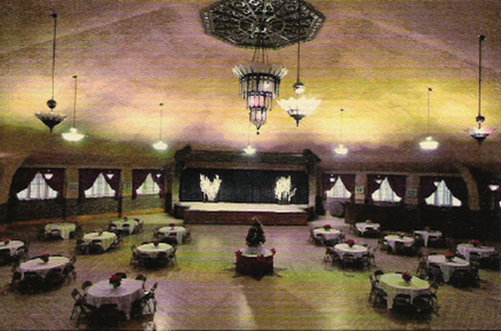
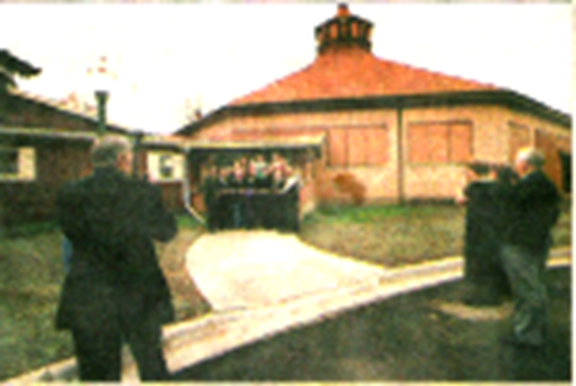
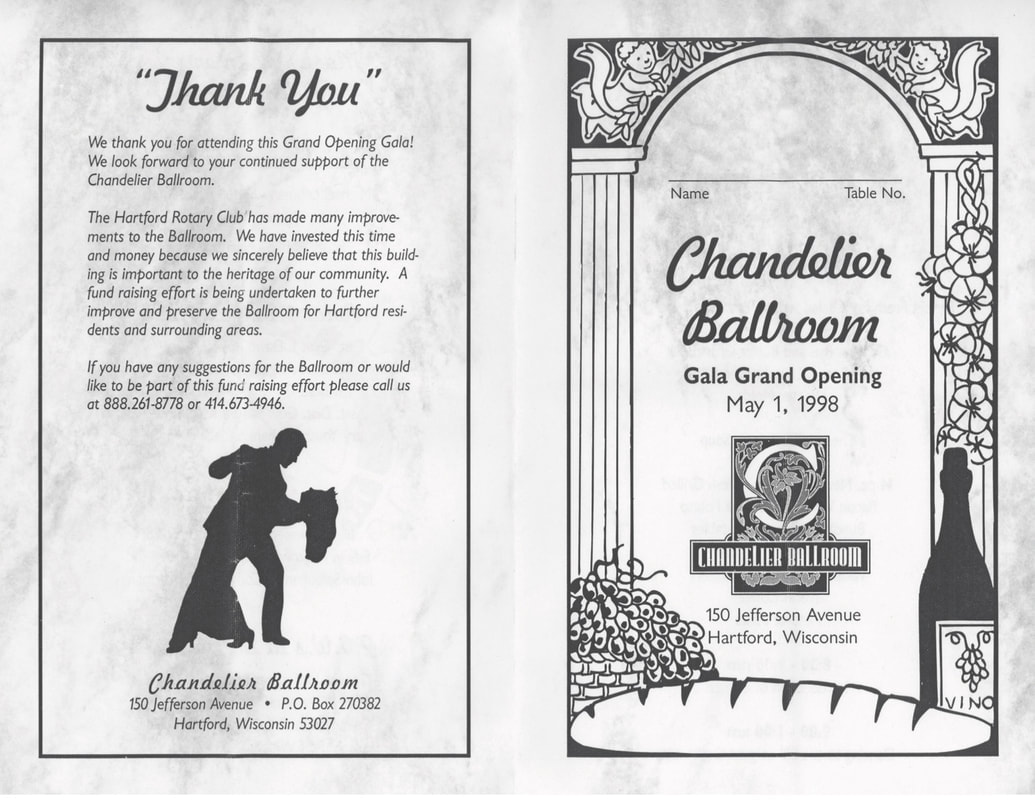
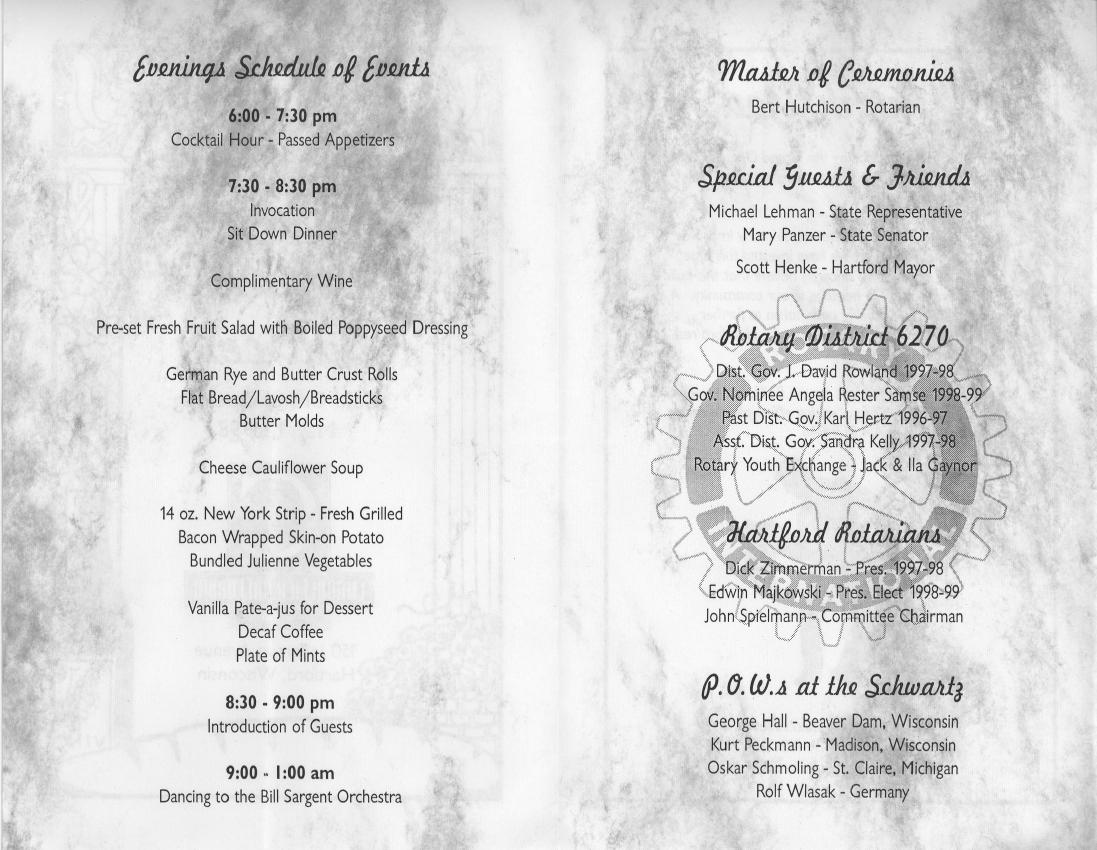
1990
In 1990, a nice article was done on Gary & Marion Wendorff by the Milwaukee Journal. The Ballroom had been known at that time as a safe house for has been rockers. “Old ‘70s rock bands never die, the joke goes, they just keep showing up at Zivko’s.” Guitarist Robin Trower draws more than 1,000 fans each time he performs here.
Shortly thereafter, Glenn and Vivian Hayden and their son John, took over ownership of the ballroom and used the ballroom for large parties, wedding receptions, dances and concerts. The Hayden’s made some restoration efforts during their tenure.
1996
In November of 1996 the Hartford Rotary Club announced its plans to purchase the Ballroom from its then owners Glenn and Vivian Hayden.
This 18 month project included a renovation and restoration package which estimated the costs at approximately $1.1 million.
About half of that would be spent on replacing the heating and cooling systems, adding additional restroom facilities, and paving the parking lot.
The Rotary’s objectives in wanting to acquire the Ballroom were to generate revenue that the organization could return to the community and to ensure that the building would remain in the Hartford community for future generations.
This project proved to be a challenge to the 50 member organization. Day to day operations would be the responsibility of James Mohr.
Three acres of the original 11 acre parcel were sold to help pay for the project. It was called the most successful historical preservation campaign in the City of Hartford.
A ‘Save the Schwartz’ committee was organized to handle fundraising and planning. Plans were finalized in October of 1997; they also changed the name to the Chandelier Ballroom at that time.
1998
On May 1, 1998, the Hartford Rotary Club hosted a “Gala Grand Opening” at the Chandelier Ballroom to celebrate the improvements made to the building.
1999
In November of 1999, the Hartford Historic Preservation Foundation, Inc., a non-stock corporation, took over the ownership of the ballroom and received its 501c (3) tax exempt status.
2000
In January of 2000, the Hartford Historic Preservation Foundation created a fundraising committee to organize the “Encore: Making It Yours” campaign.
The goal of this campaign was to raise $850,000 with $750,000 going towards debt reduction and the remaining $100,000 to be put towards minor building improvements and equipment.
This figure was decided upon so that after a significant portion of the debt would be paid, the Ballroom would generate enough of a cash flow to service the remaining debt and be able to be self-sufficient.
The committee was successful in raising approximately $750,000 through the generosity of local businesses and citizens of Hartford and surrounding communities.
2003
In April of 2003 the HHPF hired a new Executive Director, Michele Price to run day-to-day operations. In September 2003, the HHPF received a $150,000 challenge grant from the Jeffris Family Foundation.
The Jeffris Foundation is a highly respected organization dedicated to restoring historical sites in Wisconsin.
Their funds are restricted for facility preservation, structural integrity, and historical renewal. With receipt of this gift, the HHPF Board organized a new fund raising campaign named the ‘Chandelier Challenge.’
The prior ‘Encore’ campaign secured the facility’s ownership for future generations. The ‘Chandelier Challenge’ fund drive will ensure the historical renewal and structural integrity of the building hereafter.
On October 26, 2003, the ballroom celebrated its 75th anniversary.
The Hartford Historic Preservation Foundation hosted an event open to the public which allowed those who had not visited the ballroom in years, to once again, enter its doors and see the beauty of the facility.
Bert Hutchison, past-president of the HHPF board, estimated that the event drew between 1,000-1,500 people.
The HHPF board had invited Marty Zivko to attend the event, but sadly he had passed away just days prior to the special celebration. Past HHPF presidents John Spielmann and Werner Wolpert were honored at the event.




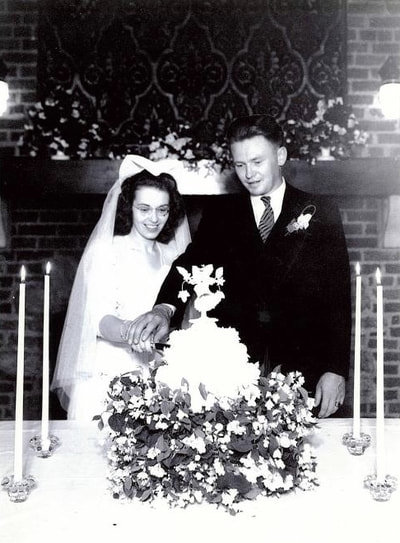
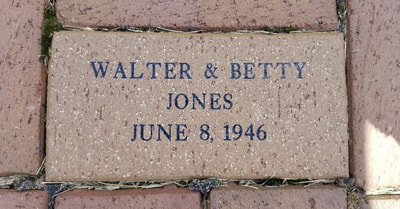
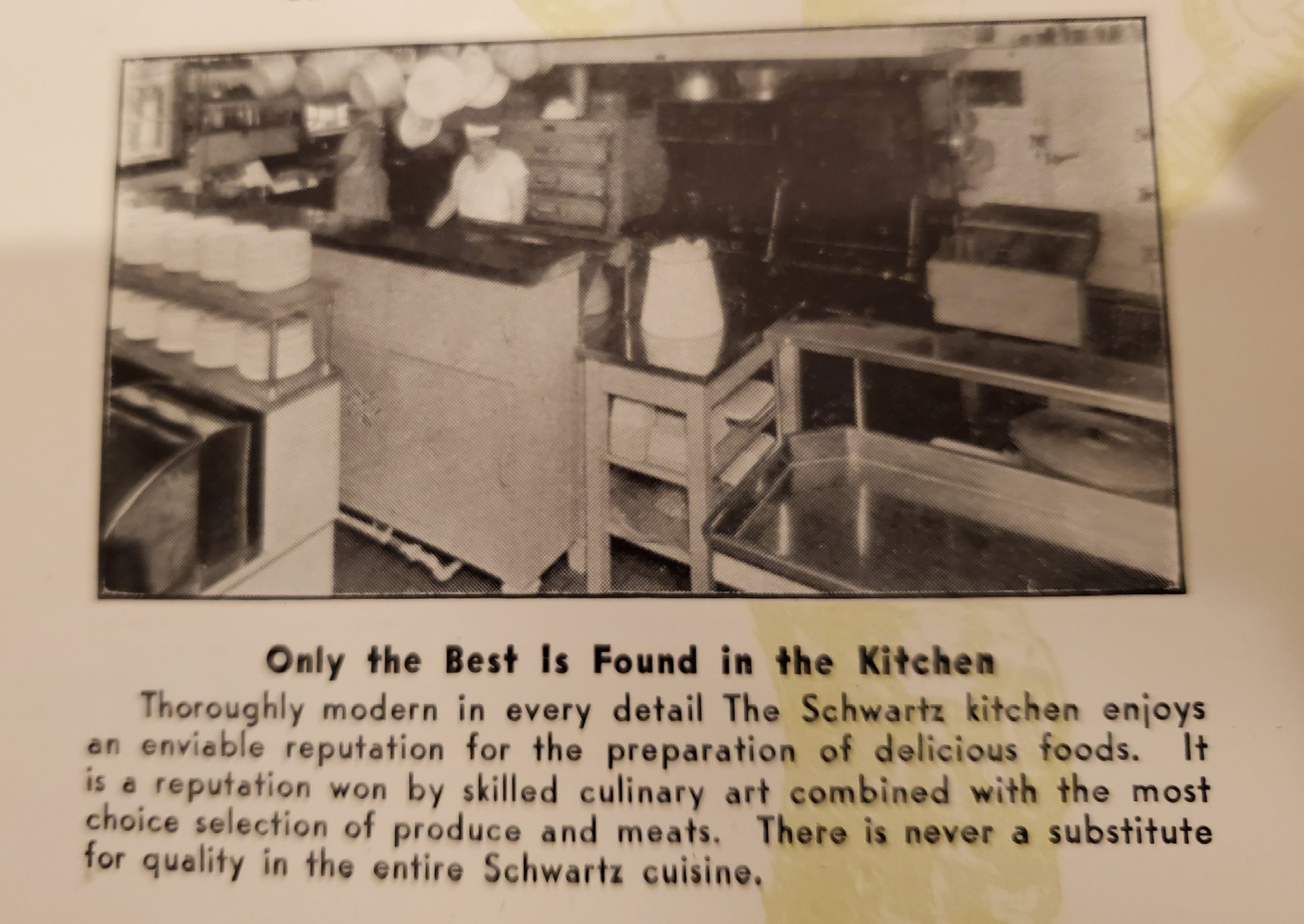
The only known photo of the original Schwartz kitchen.
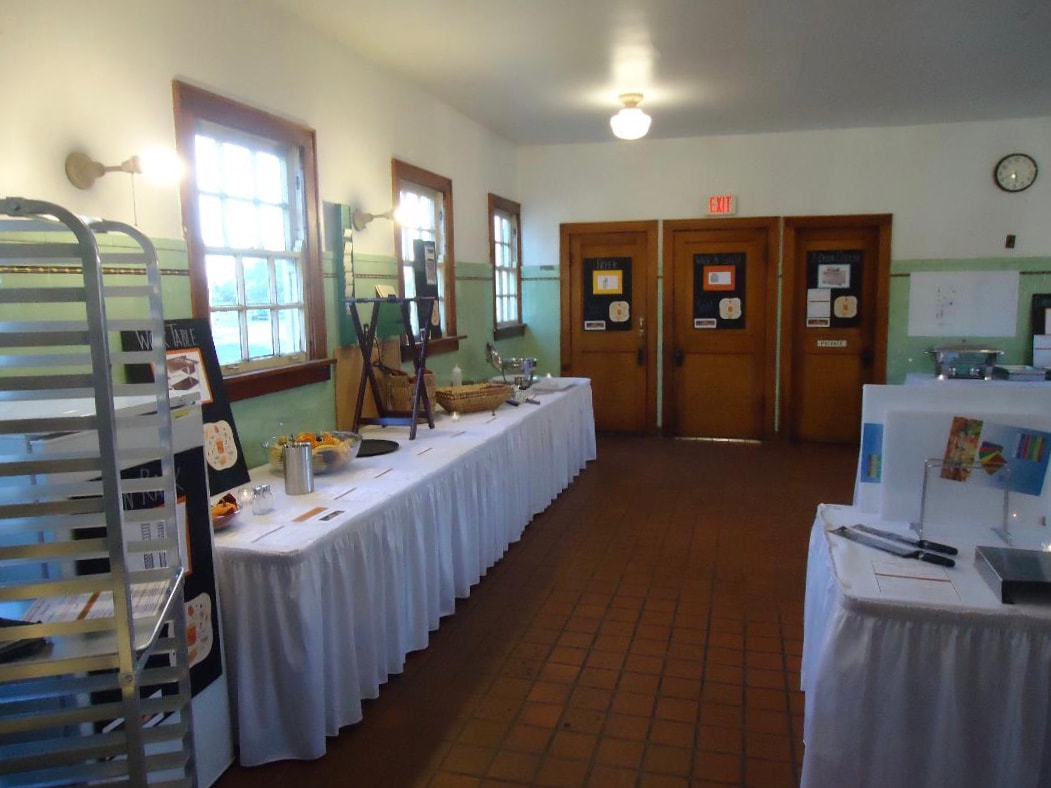
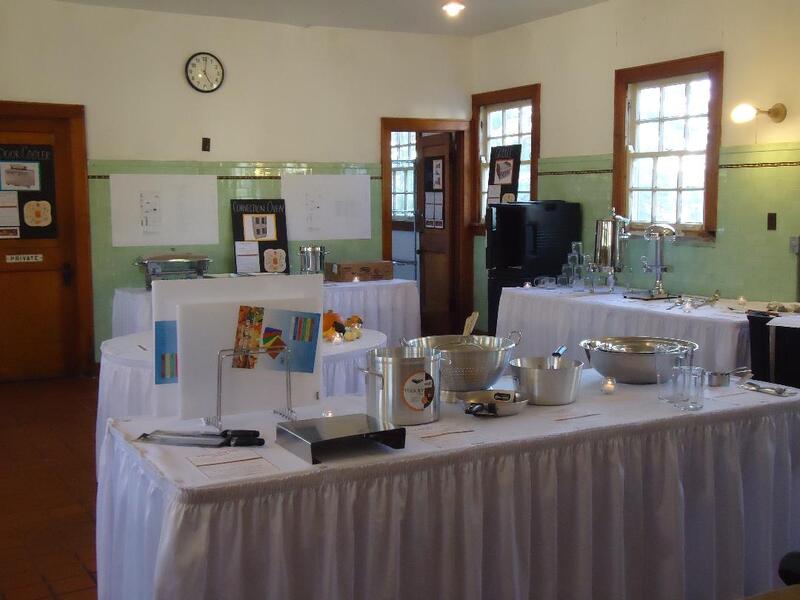
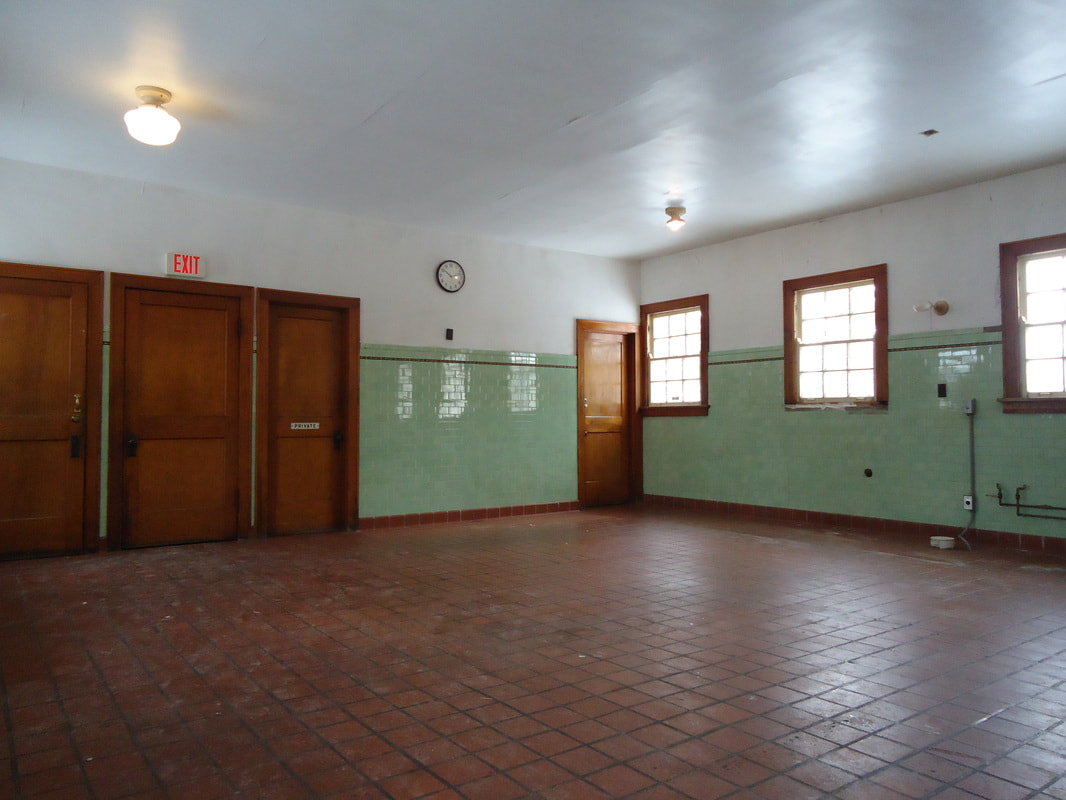
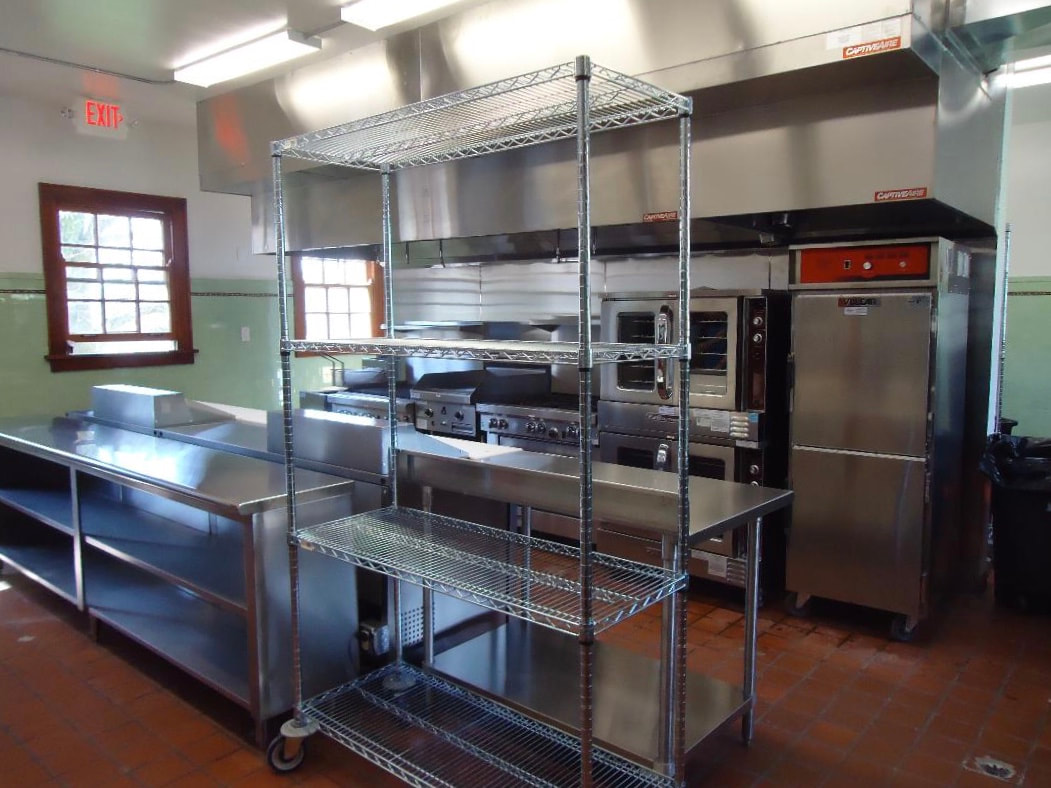
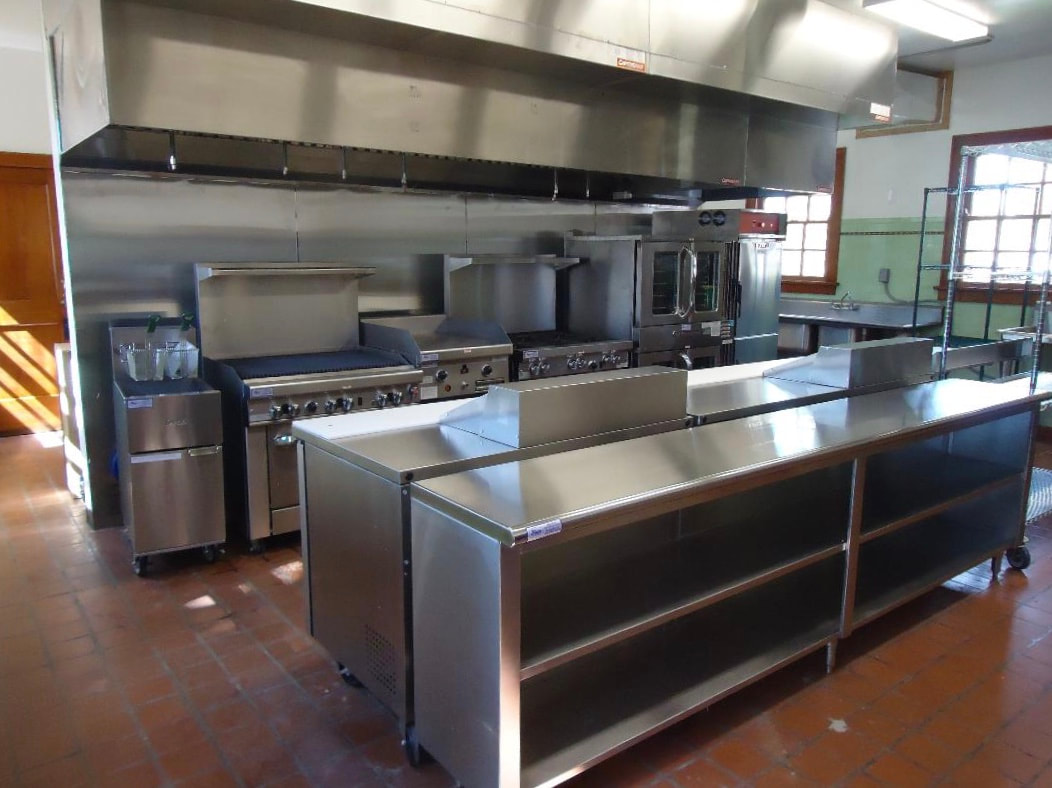

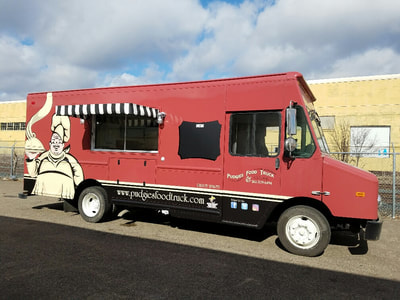
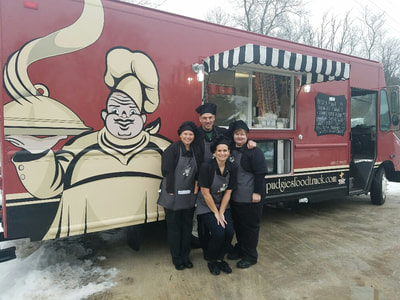
2004-2009
From 2004-2009 the Ballroom hosted numerous public events, held during the fall and winter months which included stand-up comedy nights, and local bands including Vic Ferrari, Oil Can Harry, The Sweet Tarts, Tony Rocker, The Doo-Wop Daddies, Road Trip and The Toys. The rest of the year was filled with charity dinner auctions, high school proms, corporate and leisure events, awards banquets and many, many weddings.
Throughout the years Ms. Price added an outdoor gazebo for ceremonies, an octagonal brick patio with bricks available for purchase commemorating the immense number of special events held at the Ballroom throughout the years, a large amount of landscaping with outdoor lighting, along with many other aesthetic changes all keeping the historic integrity intact.
In 2006, Ms. Price received a very touching letter and photograph from Walter and Betty Jones highlighting the significant role the Schwartz (Chandelier) Ballroom played in their lives.
The photograph is of the two of them cutting their wedding cake in front of the existing mantle and fireplace in the Fireside Room. The letter from Walter and Betty reads:
“Dear Michele, The Schwartz history for us: Betty now 87 – I’m 88 – First Prom date for me in 1935 – Prom queen for Betty 1936 – (not with me!) Many dances, with all the “Kings” of swing bands – was interrupted- prisoners. Betty 1st Lt. Army Nurse in England. Mst/Sgt. 9th Air Force England – Home in ’45 – married in ’46 – Picture (below) of our dinner party at the Schwartz Ballroom – will celebrate 60th Anniversary on June 8, 2006. This is all you could ask for in life. Walter & Betty Jones, June 8, 1946.”
Extremely grateful for such a beautiful letter and photograph, Ms. Price believed Walter and Betty’s connection to the Schwartz (Chandelier) Ballroom is emblematic of how this historic treasure has served as a gorgeous backdrop for the meeting and connection of countless couples over the decades.
2011
In 2011 the HHPF along with its Executive Director began plans to restore the empty kitchen area.
The ‘Ballroom Bistro Benefit’ was held on October 12, 2012 to raise money for the restoration. The proceeds from that event along with some operational income provided the necessary funding to get the project rolling.
2013
The board approved the start of construction which took place March 1st 2013. A&N Contracting was hired to be the general contractors and oversee the project. The Chandelier Ballroom doubled their staff to assist with catering operations and hired a chef, prep cooks, servers and dishwashers. The Ballroom had a Kitchen Grand Opening Party in June of that year to promote their new in-house catering services to their customers. Their first catered event was August of 2013.
In 2013 the Kettle Moraine Lions Club also returned to the Ballroom to host their monthly meetings here and enjoy the new menus. The Ballroom hosted a Mother’s Day Brunch on May 11, 2014 and opened its doors to the public for the first time in a long while. The Ballroom now caters to all of its existing customers.
Future plans also included returning the Fireside Room to a restaurant open to the public to once again serve steaks, chops and lobster in a ‘delightful dining room,’ ultimately returning the Chandelier Ballroom to its original purpose.
2015
On March 28, 2015 the HHPF hosted its first ‘Toasting & Tasting Event’ which brought the foundation to a ‘full circle’ point. The HHPF had the opportunity to give back to the community who had been so supportive to the Ballroom for so many years.
The HHPF was able to donate funds to the Brasure School House, the Downtown Hartford Holiday Lights Project as well as donating three, $500.00 scholarships to the Moraine Park Technical College Culinary Arts Department. The event was such a success, the HHPF agreed to make this an annual fundraiser to support other projects in the Hartford community.
2017
In February 2017 the Chandelier Ballroom brought home its one-of-a-kind, custom-built Food Truck! It was named Pudgies Food Truck to recognize its signature menu item, an old-fashioned pudgie pie.
The Chandelier Ballroom culinary team put their own twist on this classic by starting with a homemade pretzel dough and stuffing it with irresistible fillings including Philly Cheesesteak, Italian Meatball, Chicken Bacon Spartichoke and Caramel Apple Crunch Pudgies.
The pudgies are boiled then baked to a golden brown perfection. The truck also serves sliders, wraps, boats and their homemade ‘Pudgie’ cookies.
The logo on the truck is an updated version of the original chef that was on the cover of the menus when the facility was owned by Marty Zivko!
We are so proud to bring that logo back to life and have it prominently displayed on our truck. The food truck features a fully operational kitchen inside which allows us to also cater off-premise events as well. Please visit www.pudgiesfoodtruck.com for additional details.
2018
The historic Chandelier Ballroom always has a laundry list of projects that need our attention. We made significant improvements to the HVAC system and roof and renovated the ladies’ restroom in spring 2018.
Ladies’ Restroom Before Renovation:
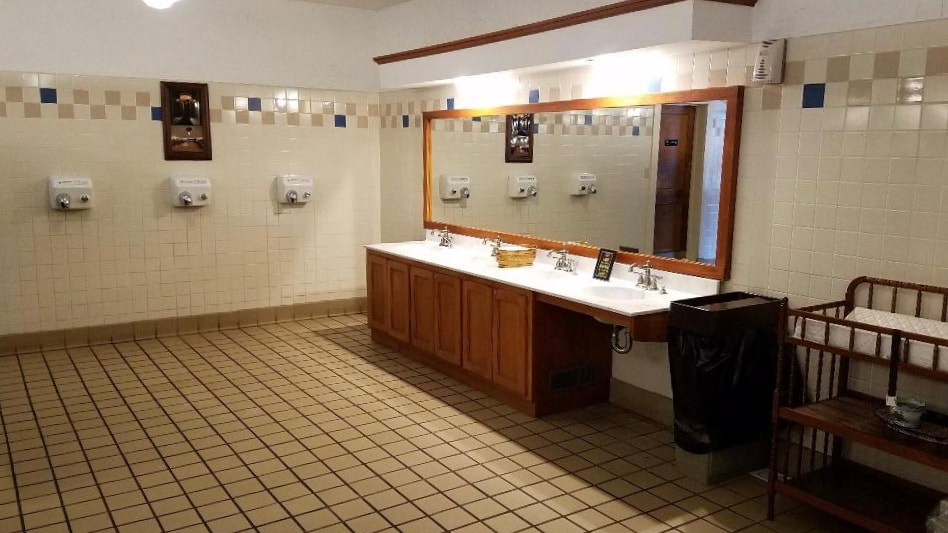
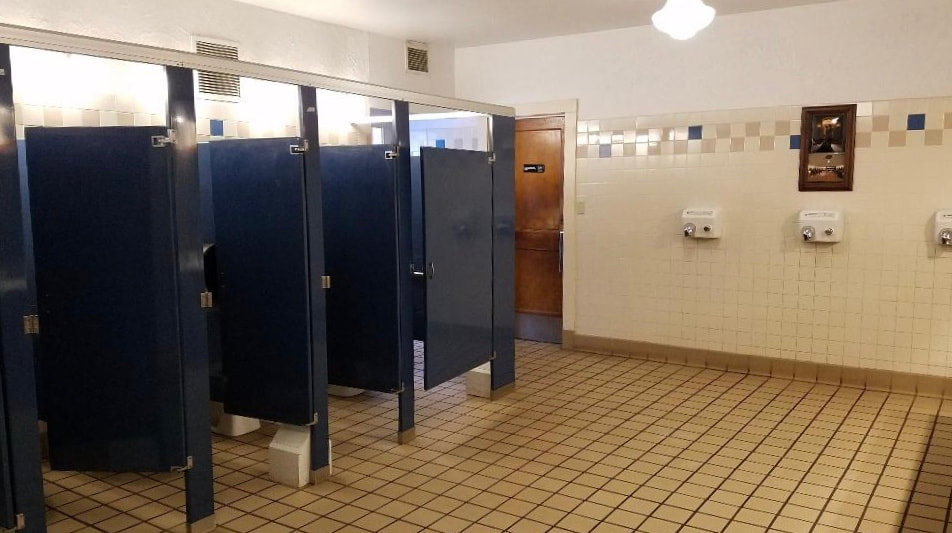
Ladies’ Restroom After Renovation:
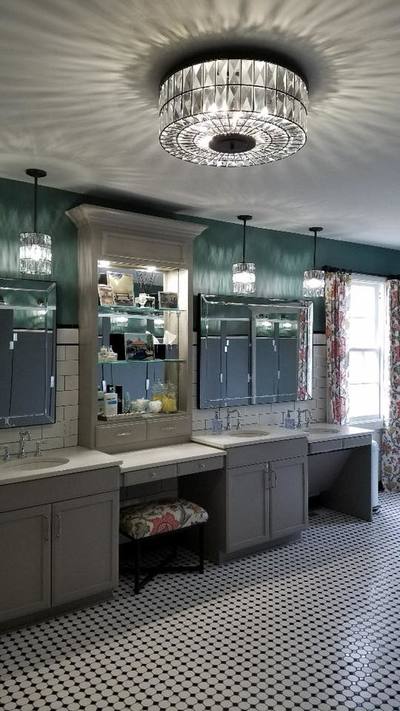
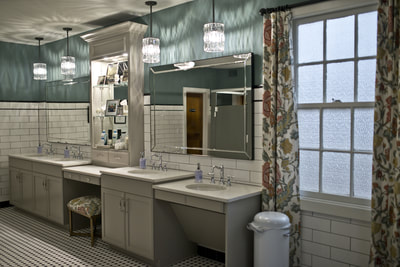
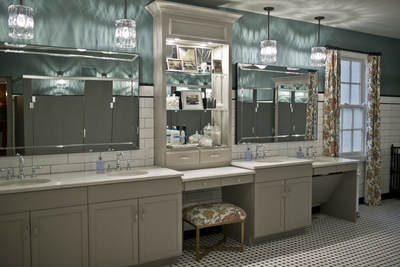
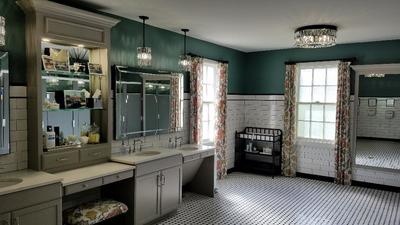
2018
2018 marked the 90th anniversary of the Chandelier Ballroom, and a fabulous gala was held on Saturday, November 3rd, to celebrate the rich history of this special venue.
As you can see, the Ballroom is utilized for many great purposes year round bringing together families and friends from all over the state of Wisconsin and beyond.
This is a truly wonderful facility filled with decades of precious memories for people of all ages, and we cannot be responsible for letting this delicate piece of history crumble in our hands.
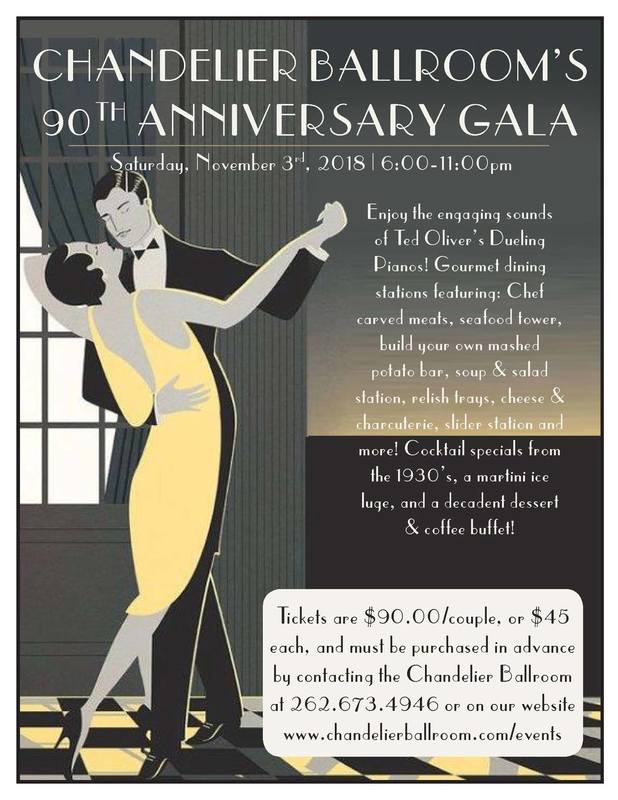
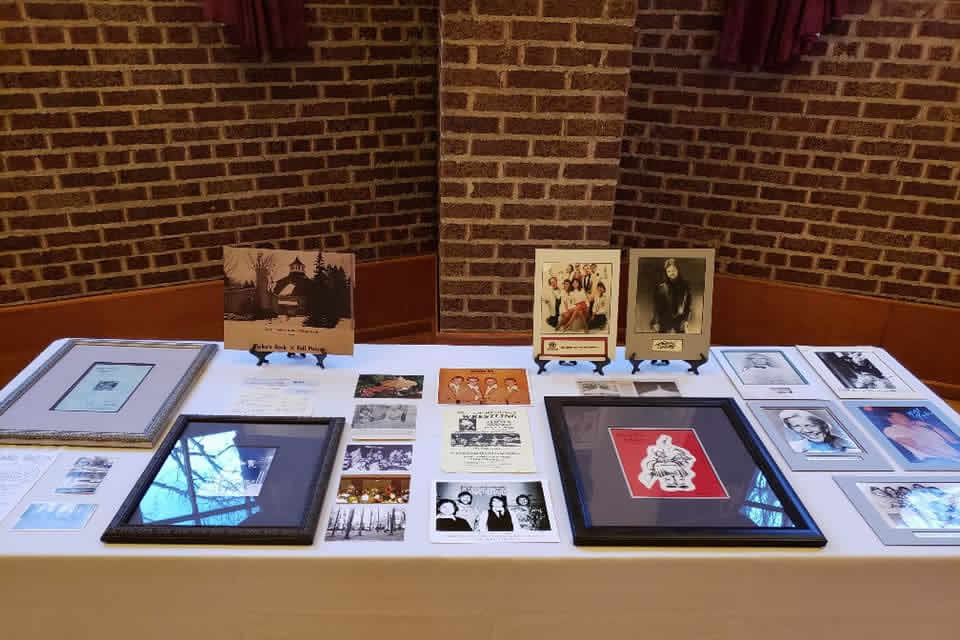
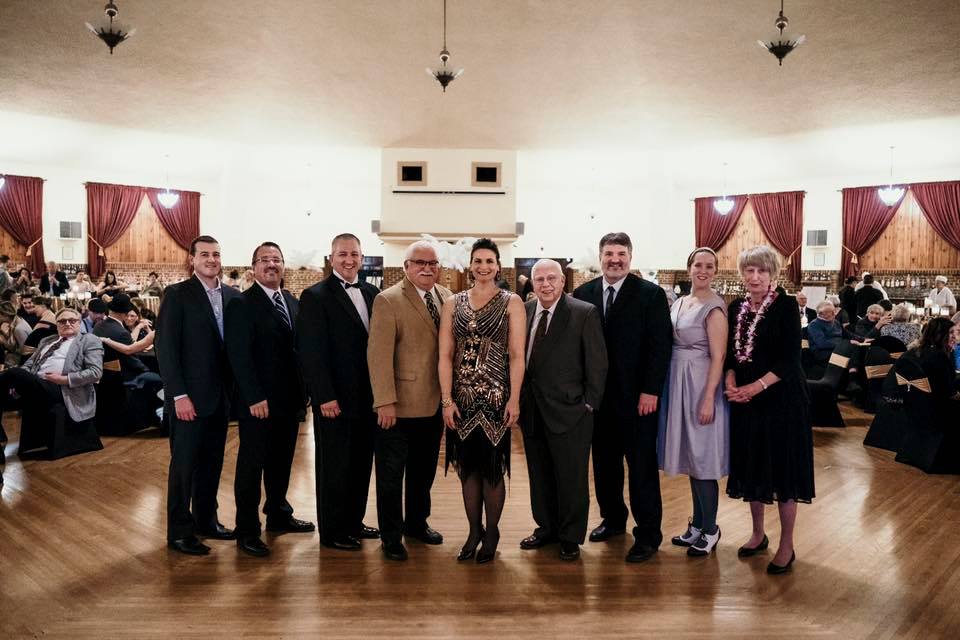
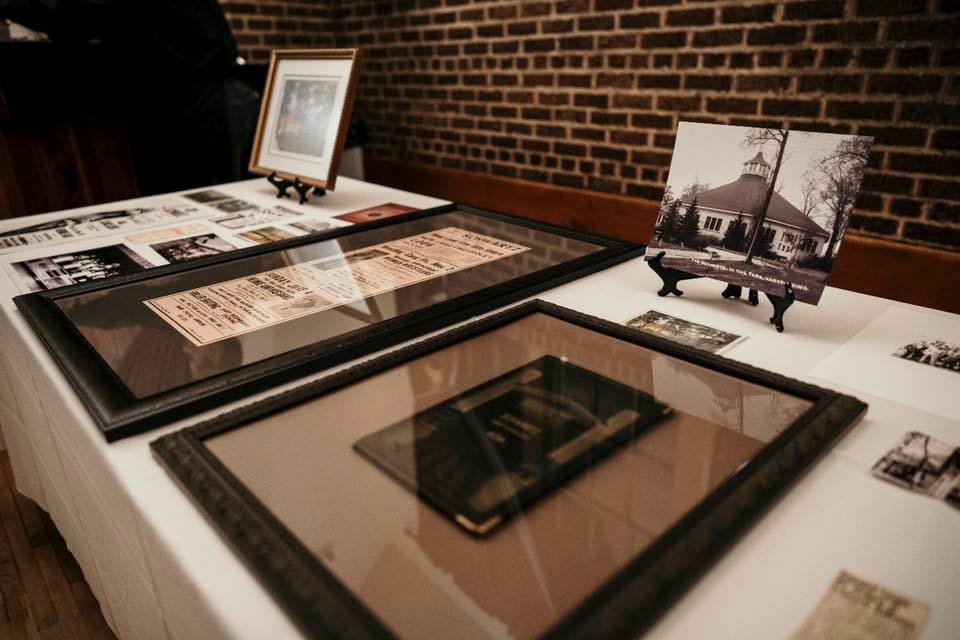
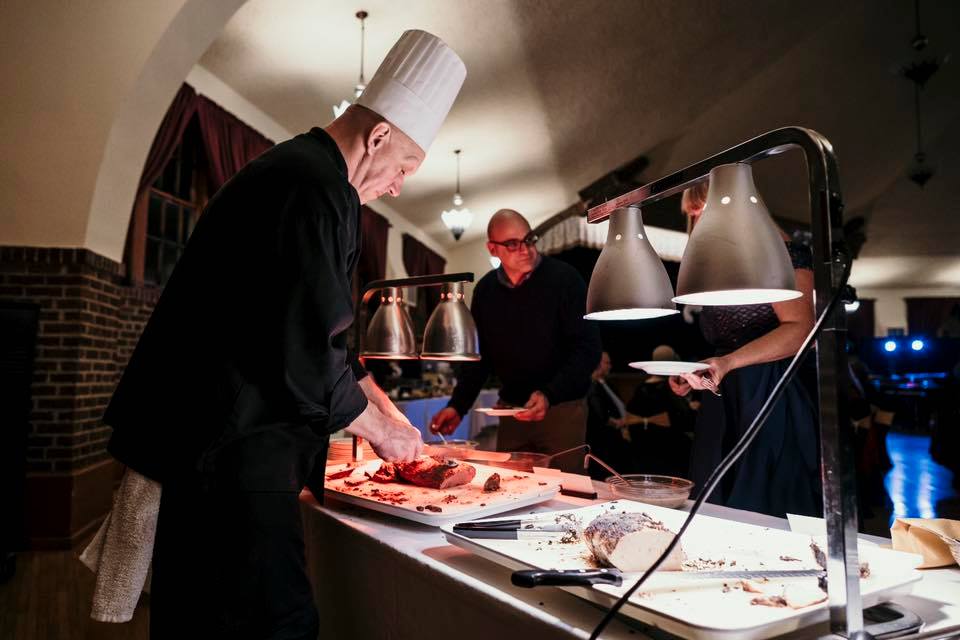
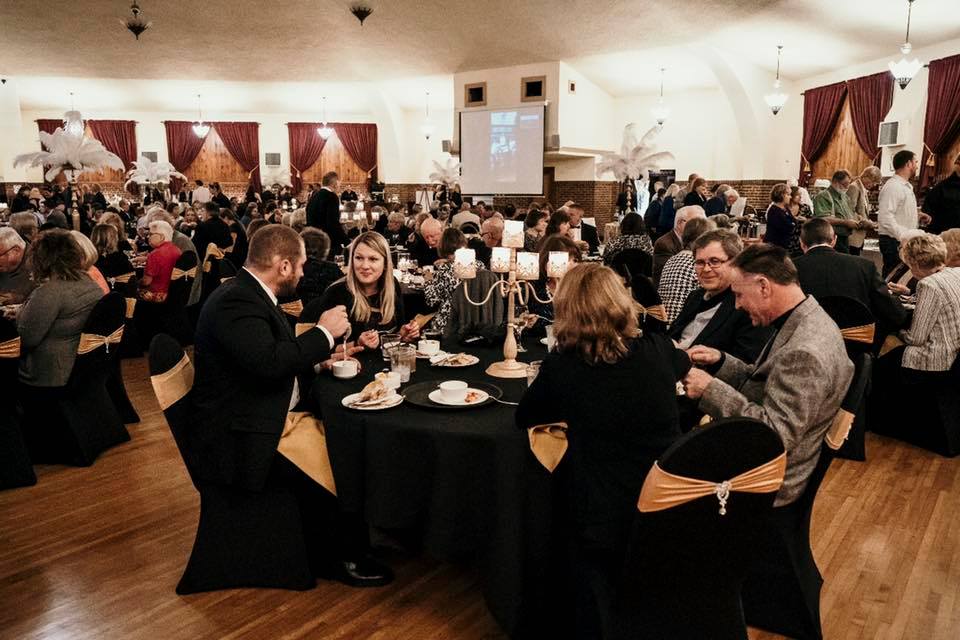
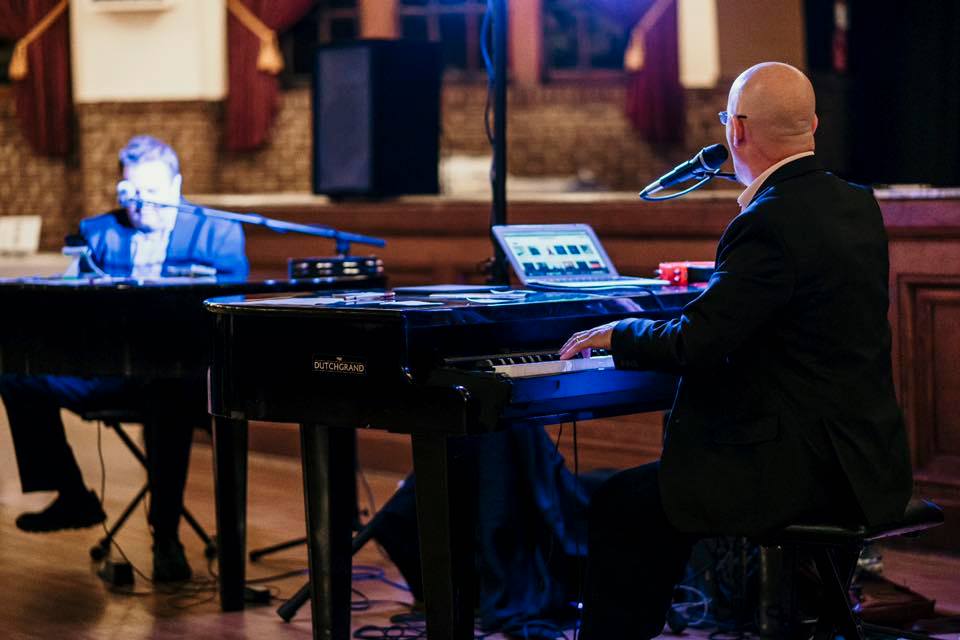
2022
In 2022 we completed the final major update to the Chandelier Ballroom. The men’s restroom was in need of a refresh. We worked with A&N Contracting and the finished product compliments the ladies restroom and we couldn’t be more pleased!
Men’s Restroom Before Renovation:
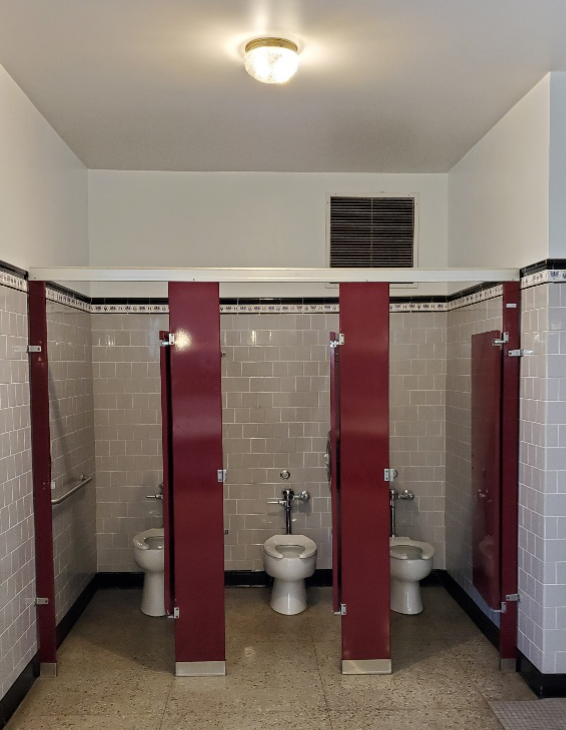
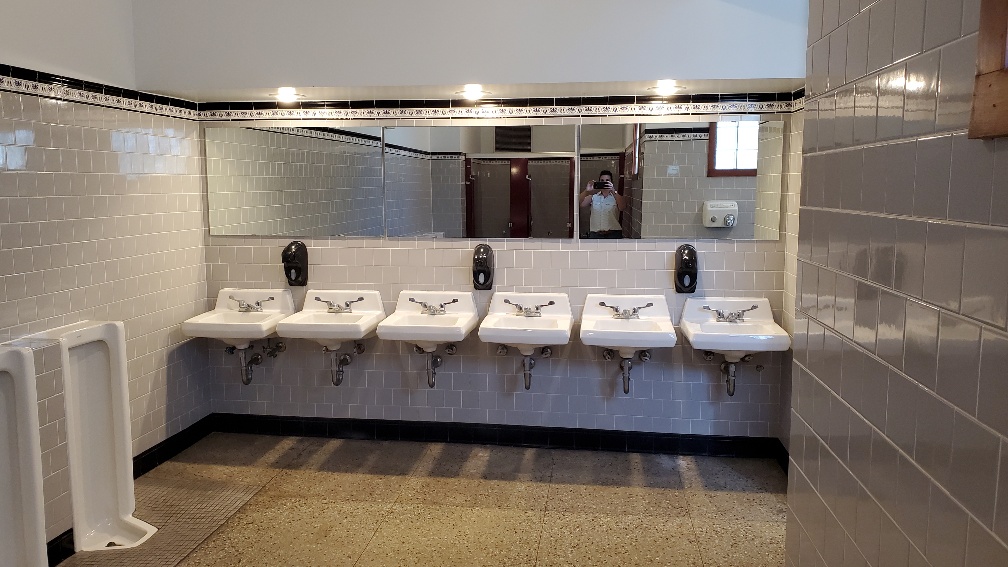
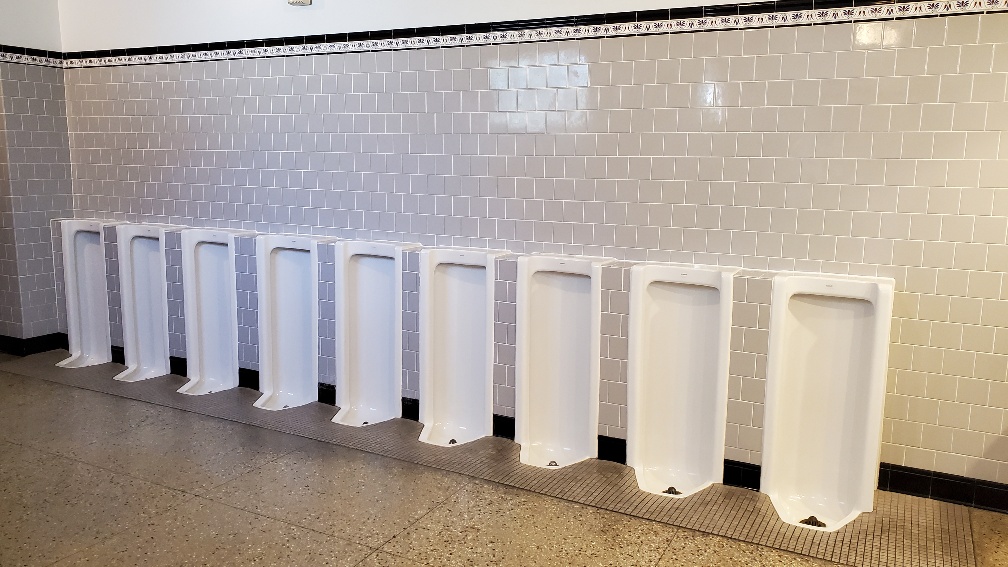
Men’s Restroom After Renovation:
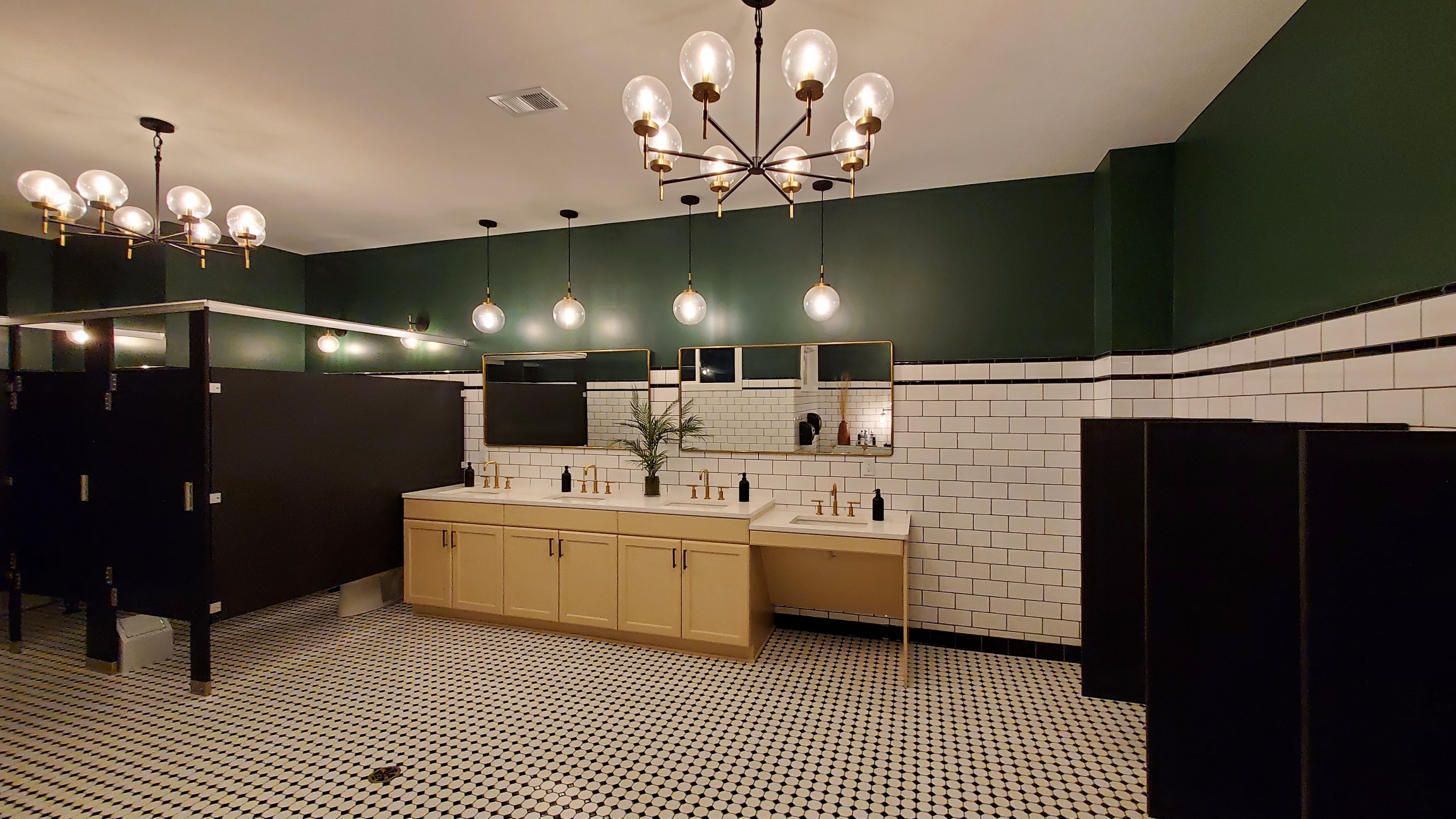
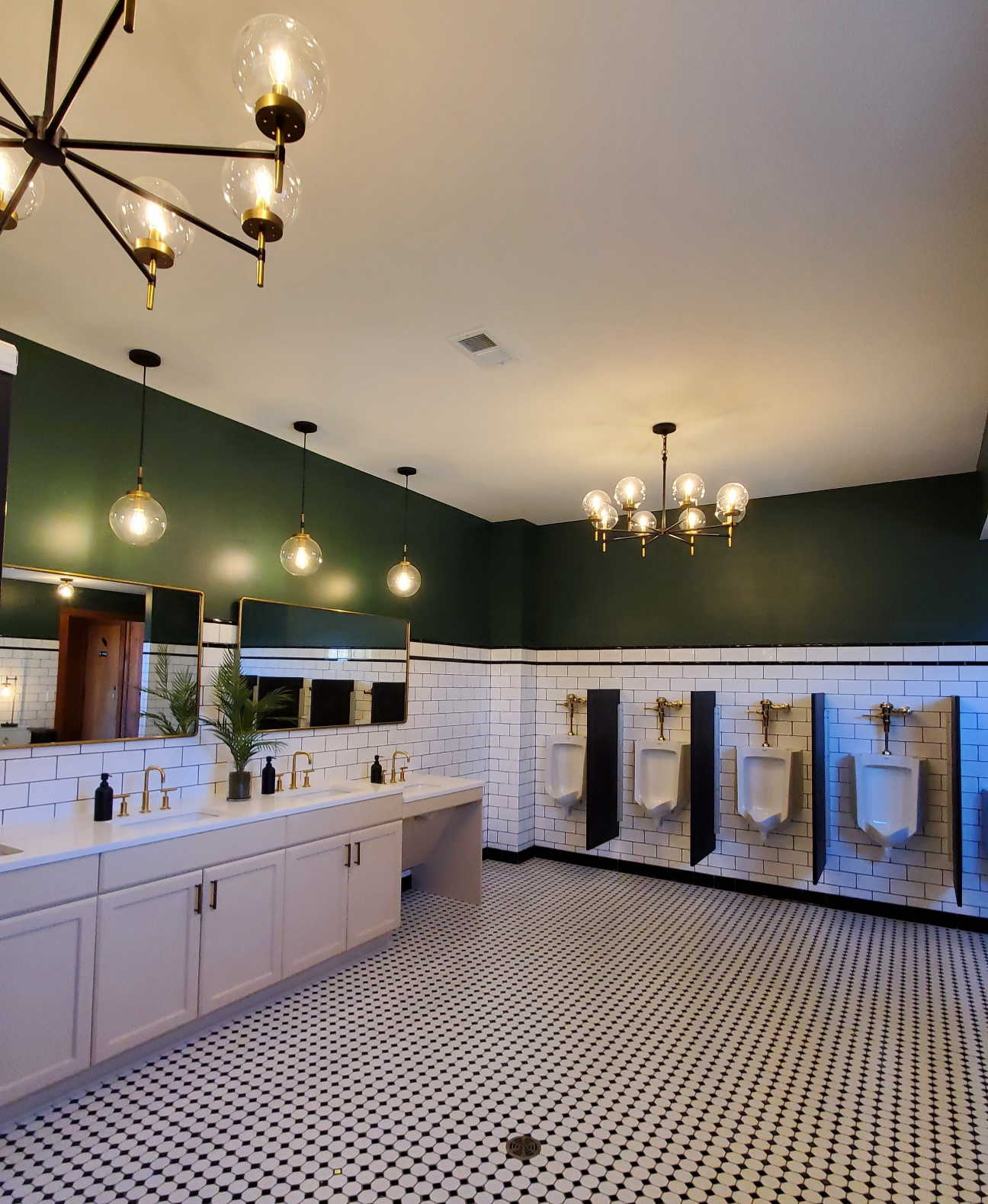
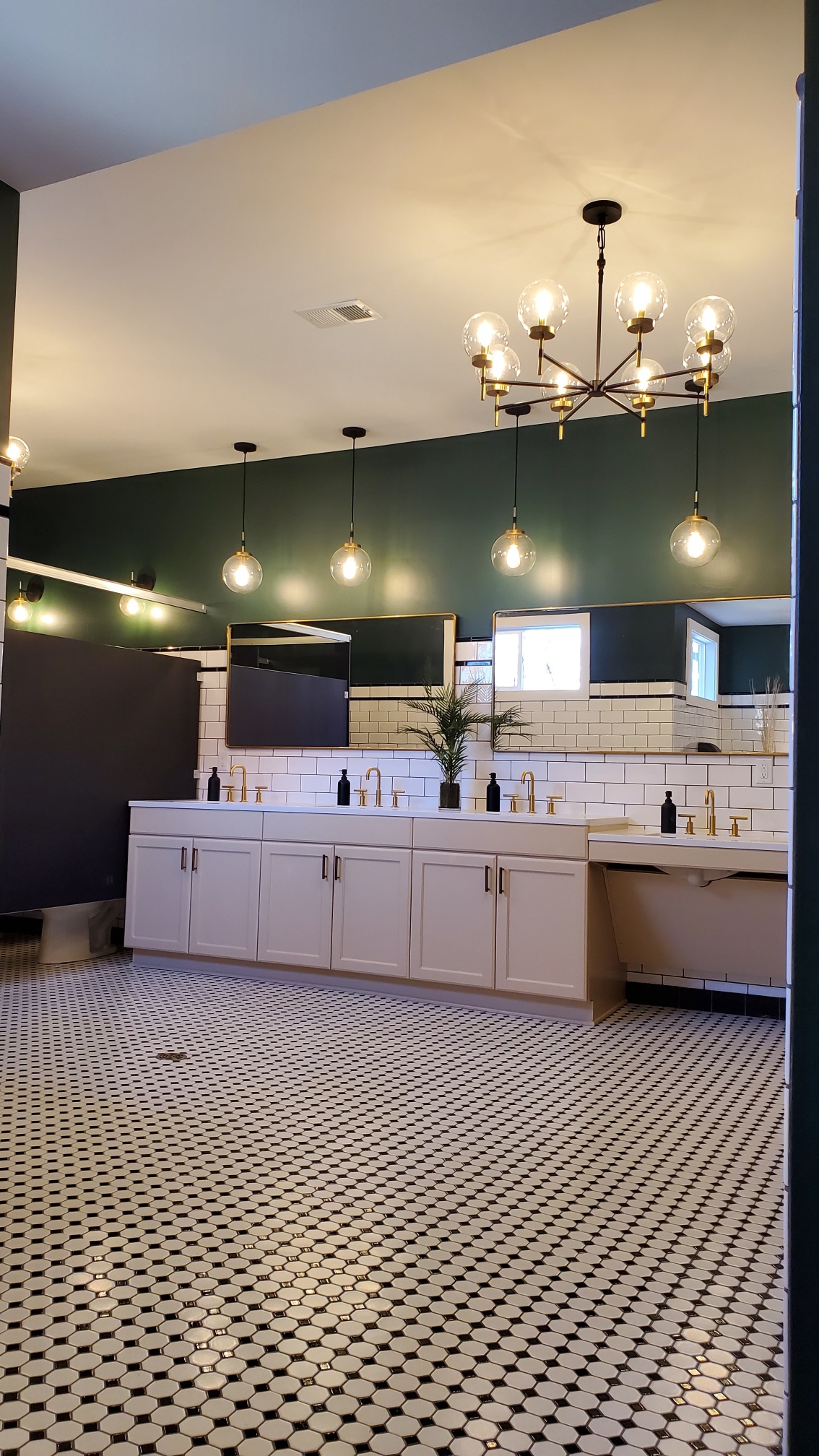
2023
The Hartford Historic Preservation Foundation is overjoyed to announce the upcoming celebration of the Chandelier Ballroom’s 95th Anniversary on Friday, October 20, 2023.
The Chandelier (Schwartz) Ballroom opened its doors on October 20, 1928 with Harold Austin and his New Yorkers performing on stage. Our 95th Anniversary Celebration will mirror our former ‘Toasting and Tasting Fundraiser’ by offering a wide range of appetizers, wine, beer and craft cocktails.
The Ballroom has not hosted a fundraiser open to the public since 2019 due to COVID. Proceeds from this event will be utilized for the continued restoration efforts of the Schwartz Family House, which is also listed on the State and National Register of Historic Places.
The house will be utilized as an extension of the Ballroom for smaller private events such as birthdays, anniversaries, baby and bridal showers, holiday parties and other celebrations.
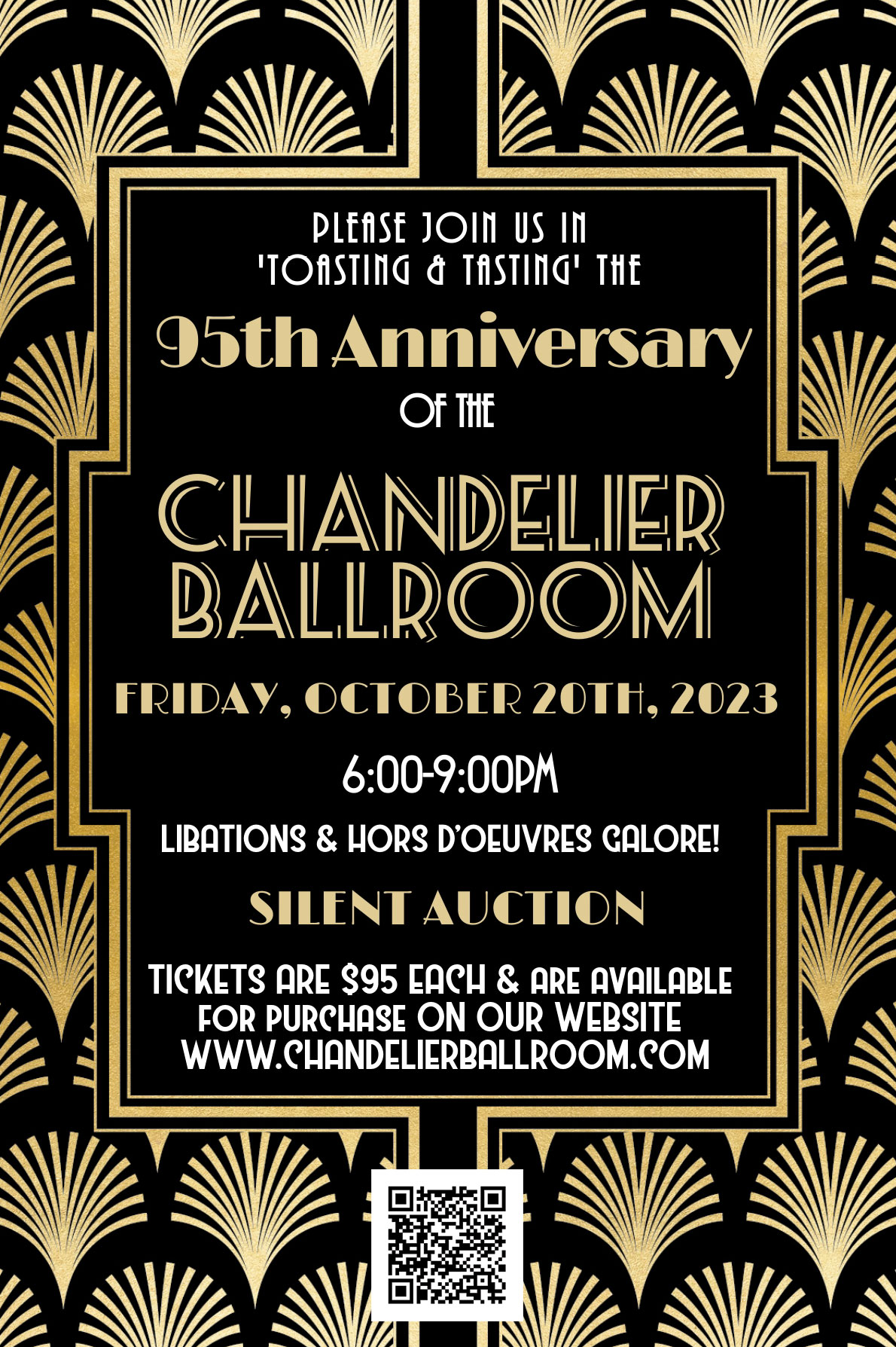
Chandelier Ballroom
Phone: 262.673.4946
Address: 150 Jefferson Avenue
Hartford, WI 53027
